Away from Home Virtual Exhibition
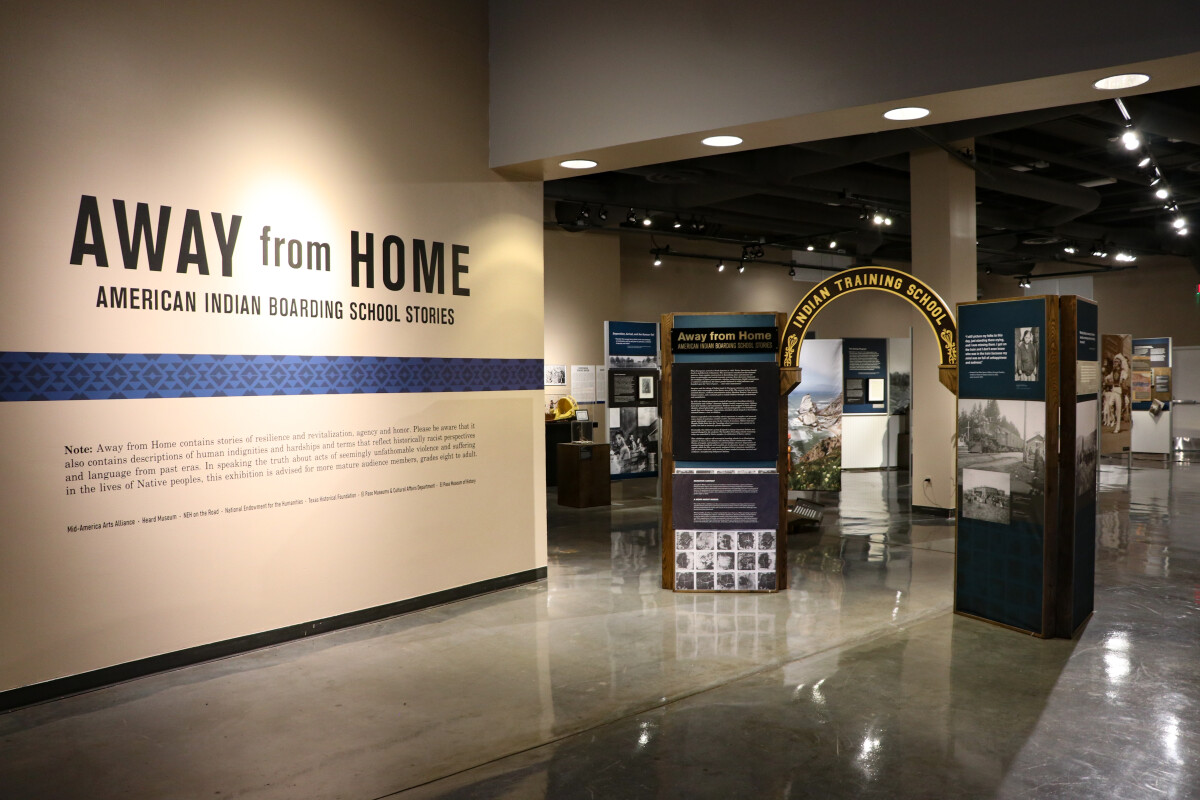
Away from Home Virtual Exhibition
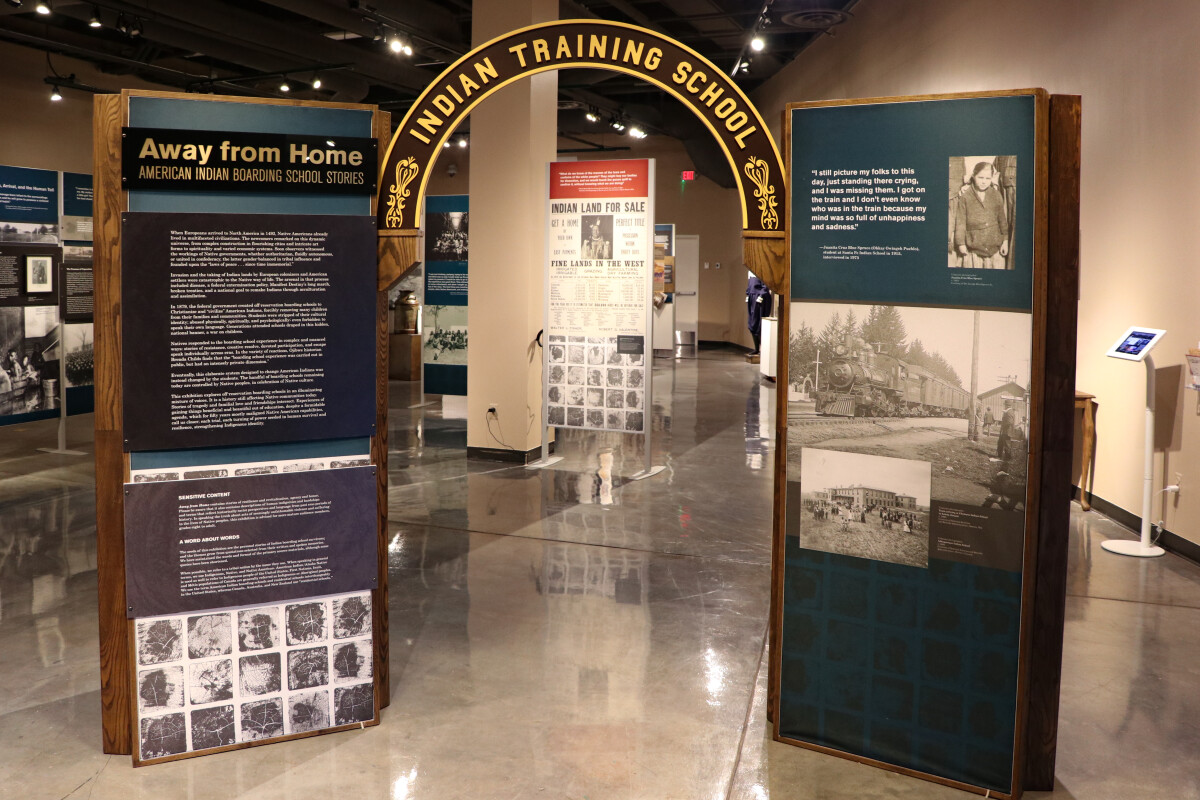
Away from Home Virtual Exhibition
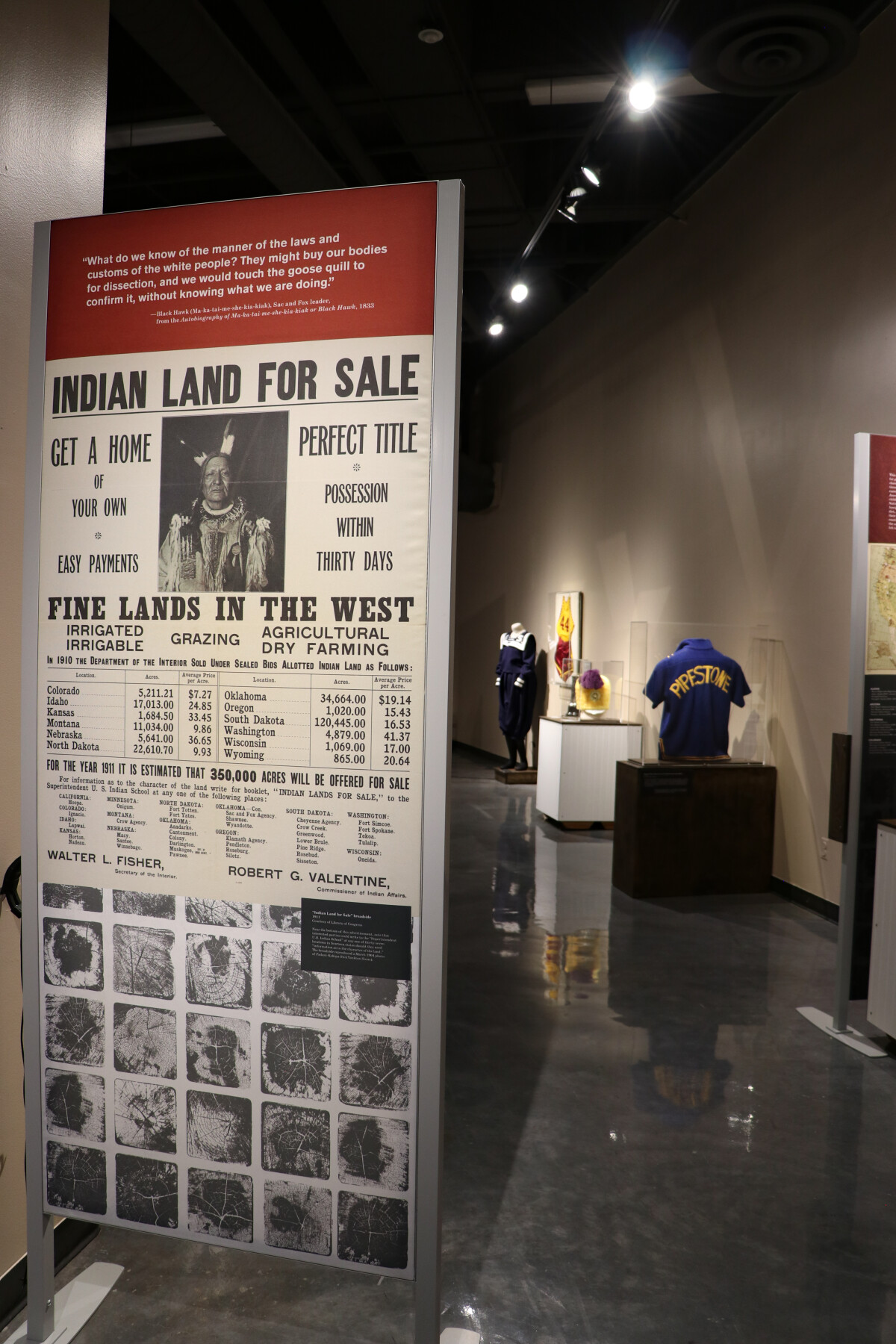
Away from Home Virtual Exhibition
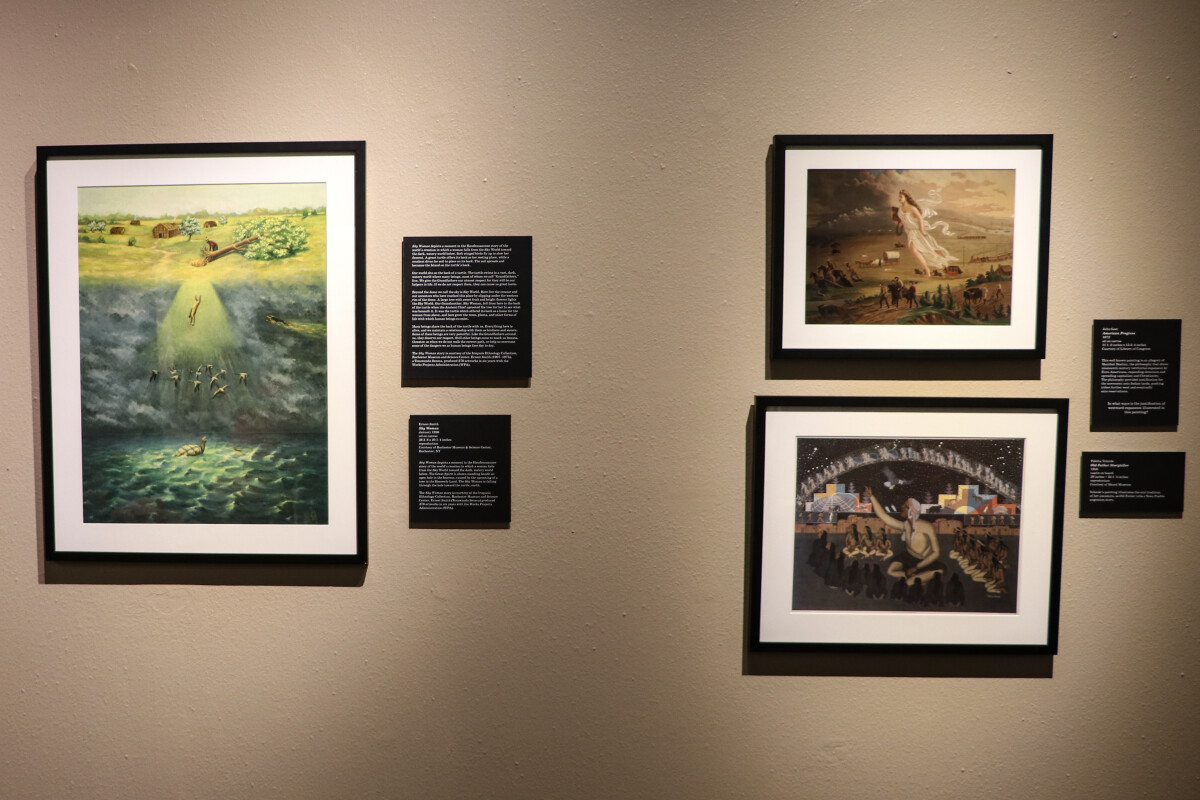
Away from Home Virtual Exhibition
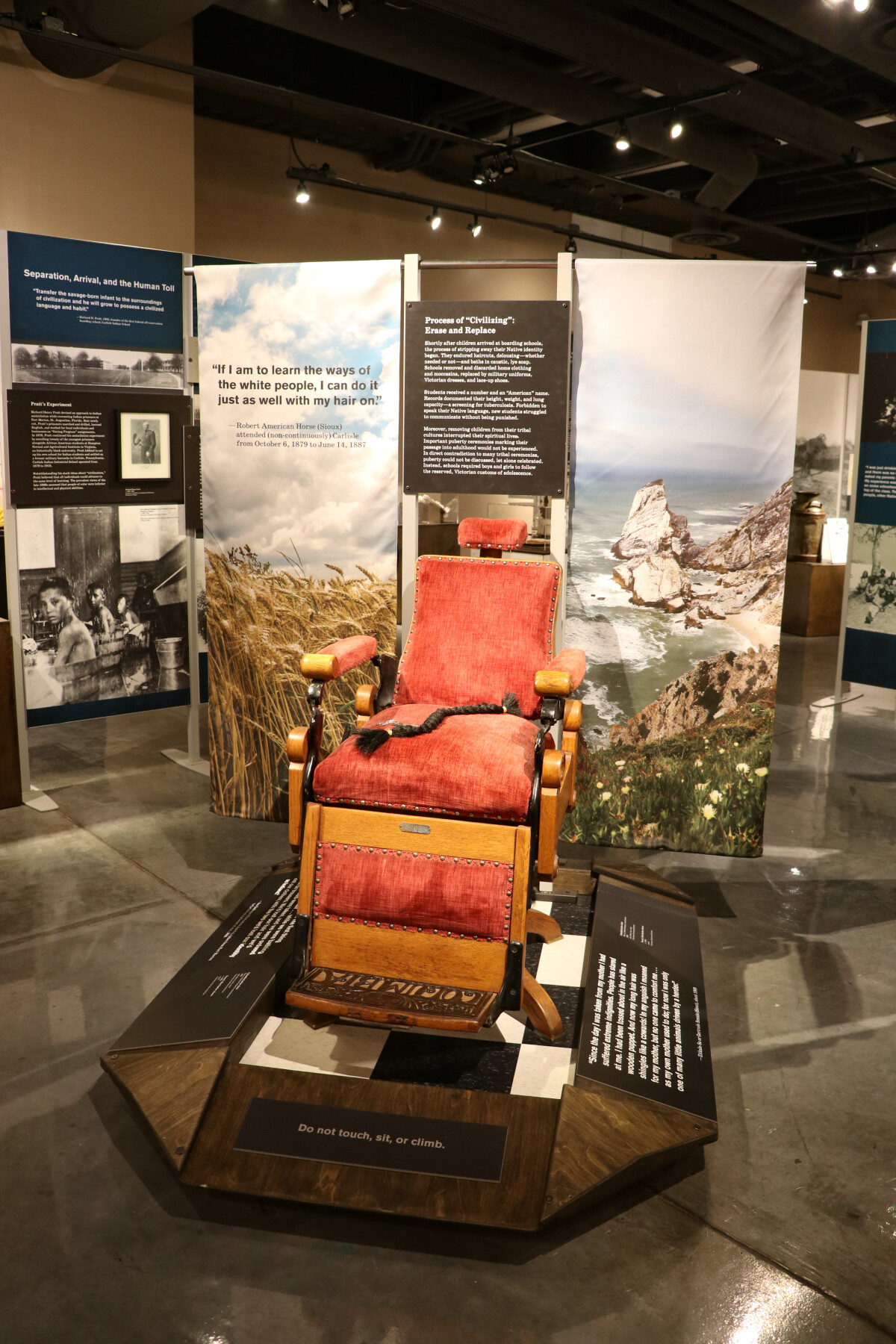
Away from Home Virtual Exhibition
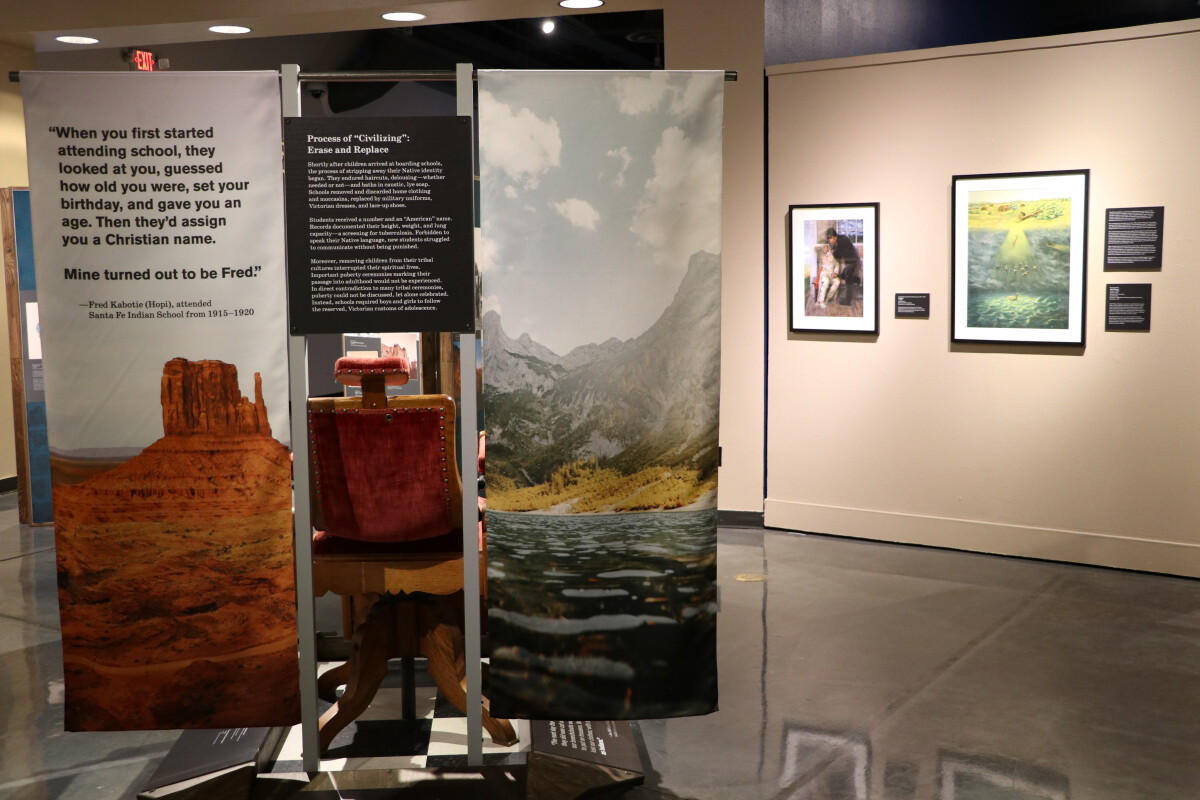
Away from Home Virtual Exhibition
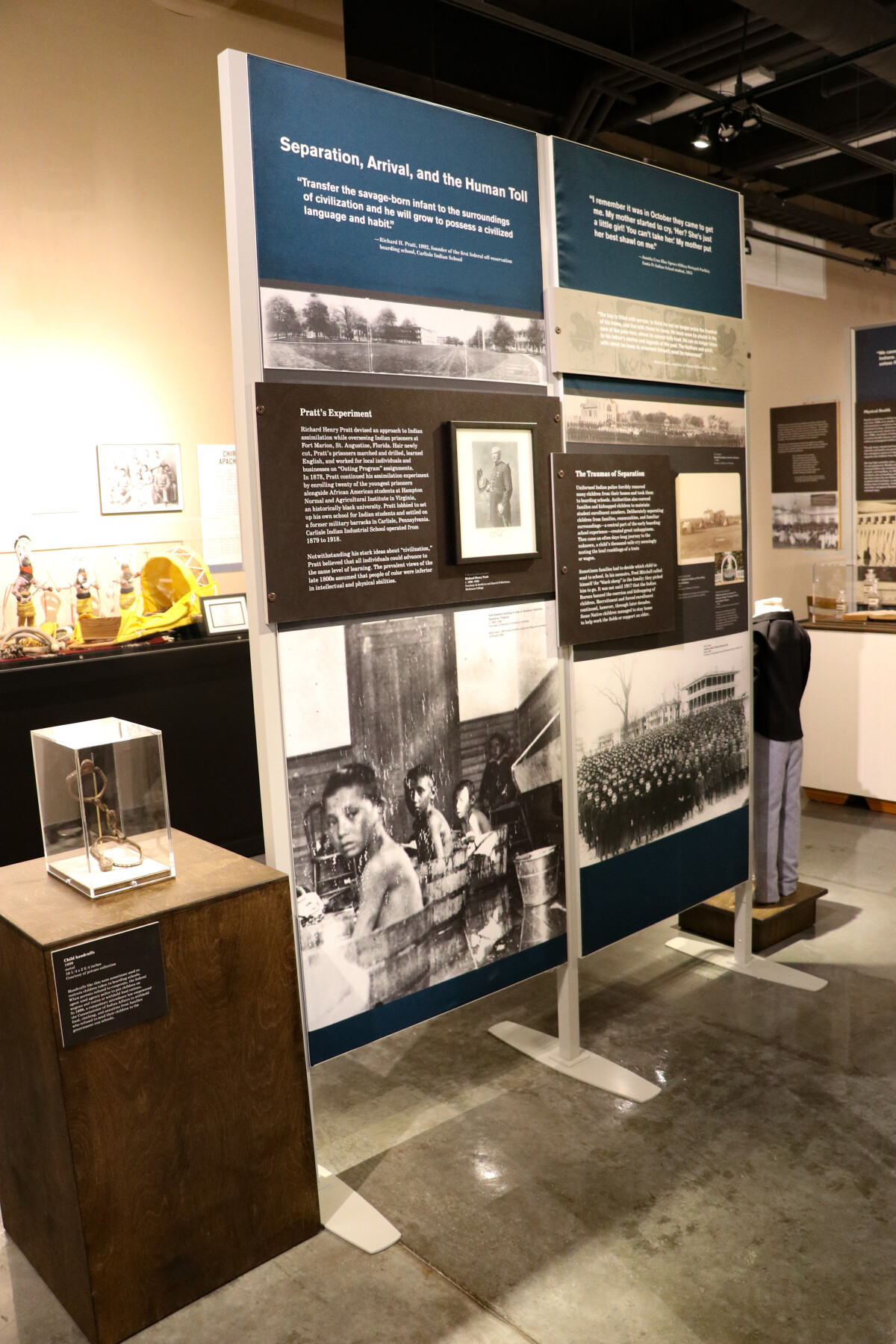
Away from Home Virtual Exhibition
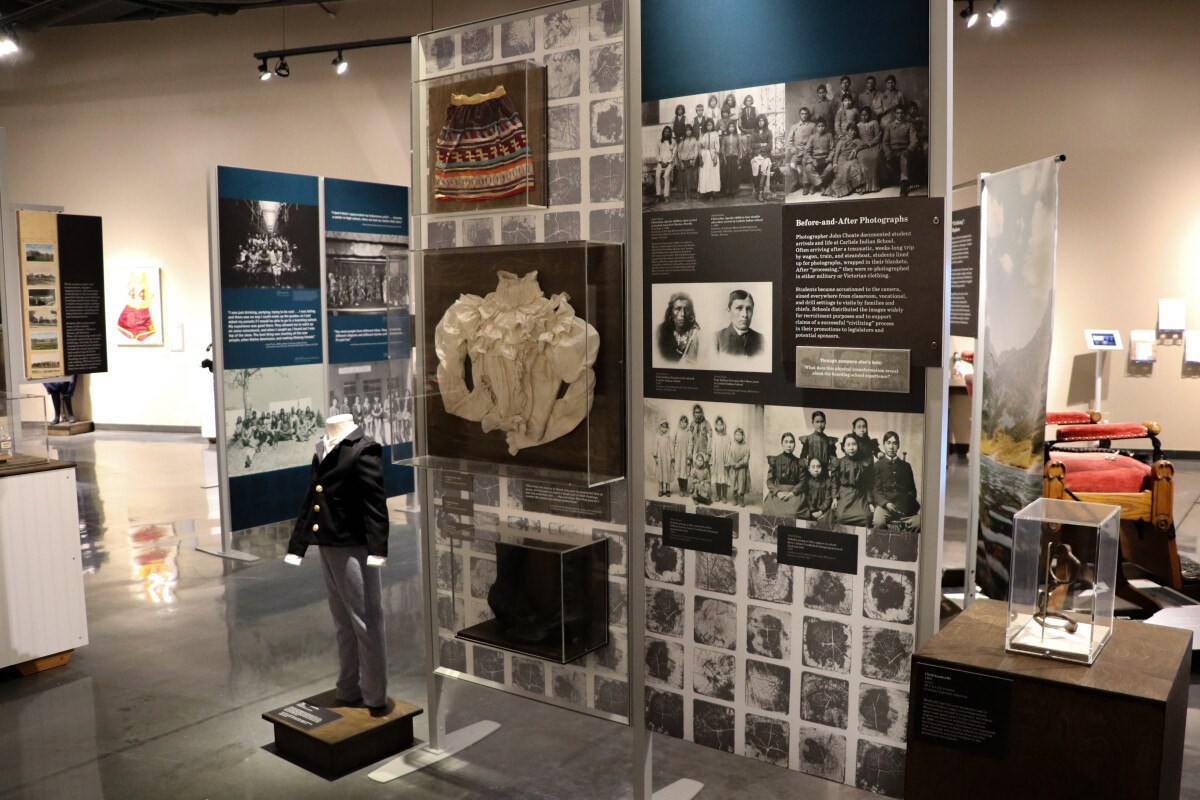
Away from Home Virtual Exhibition
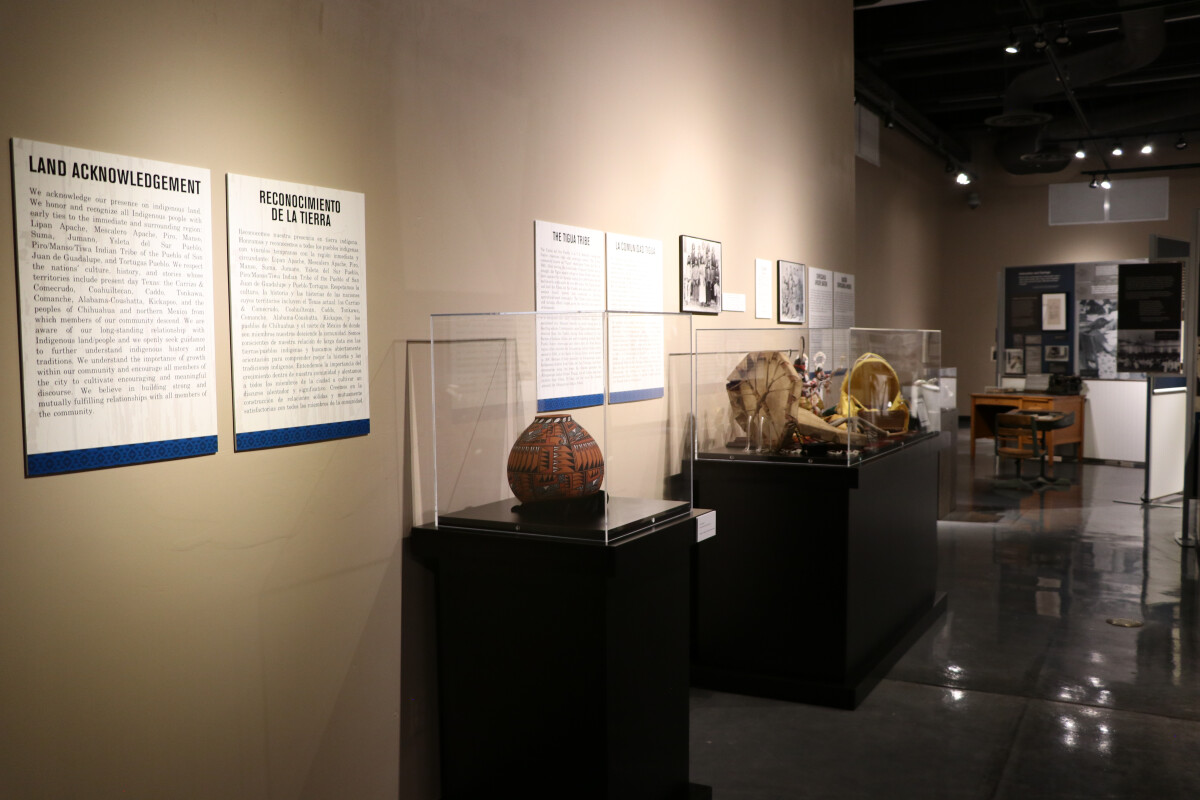
Away from Home Virtual Exhibition
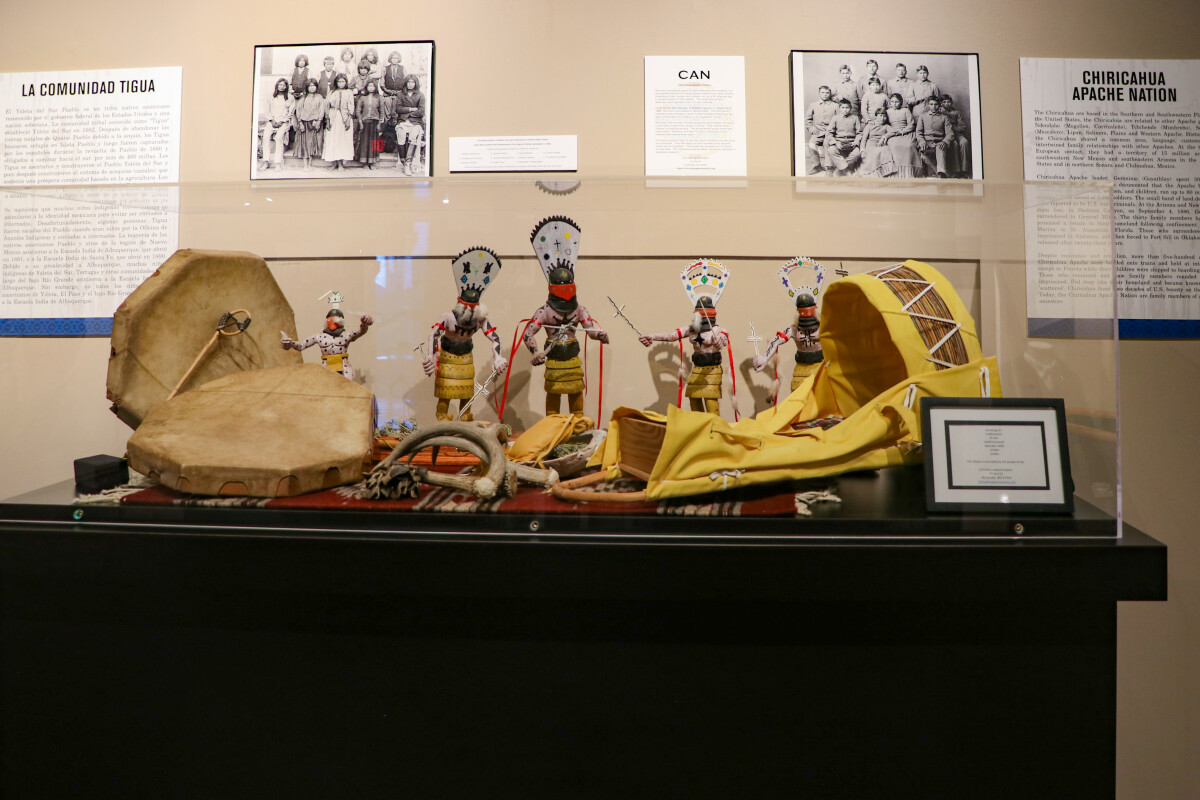
Away from Home Virtual Exhibition
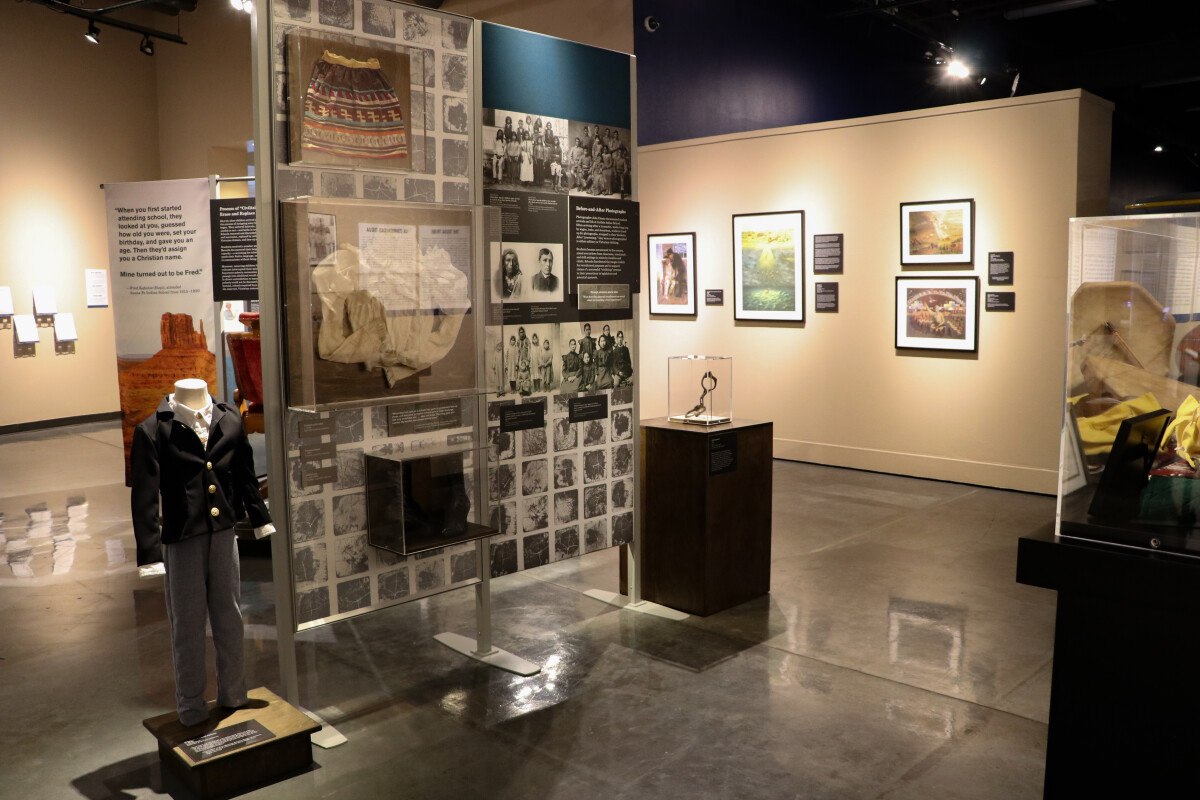
Away from Home Virtual Exhibition
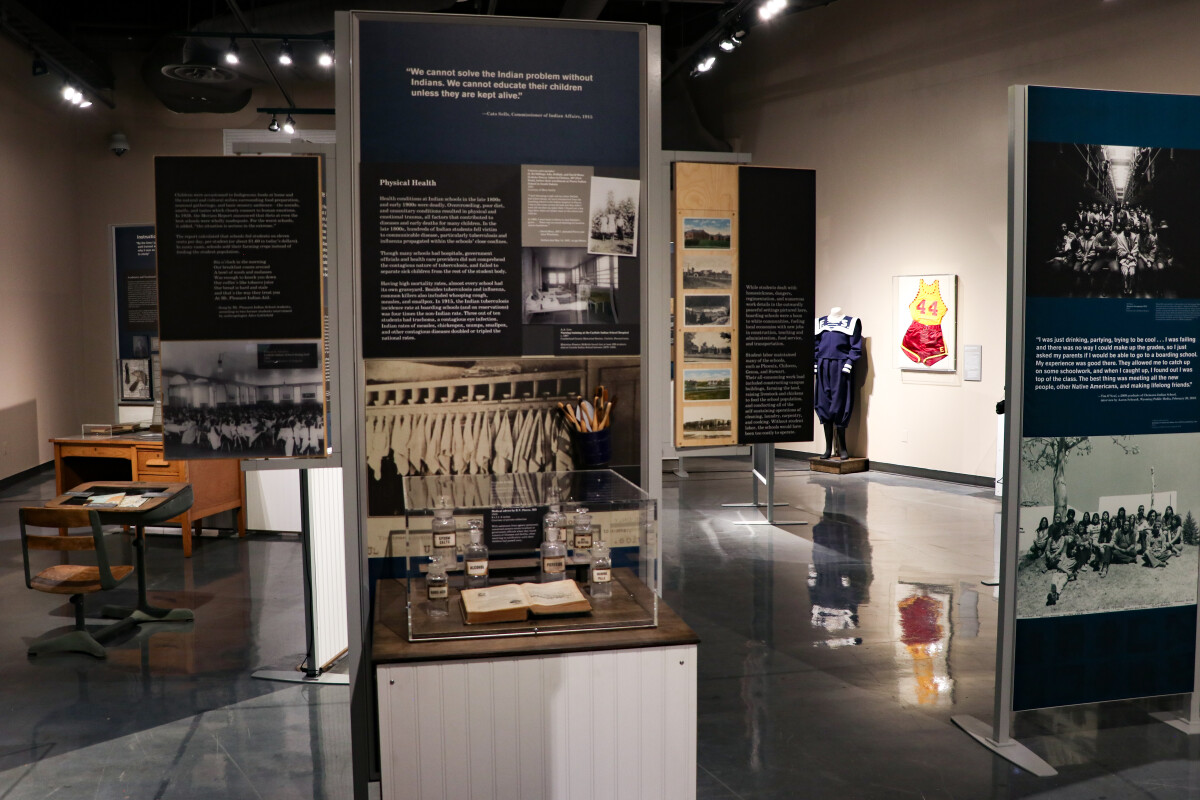
Away from Home Virtual Exhibition
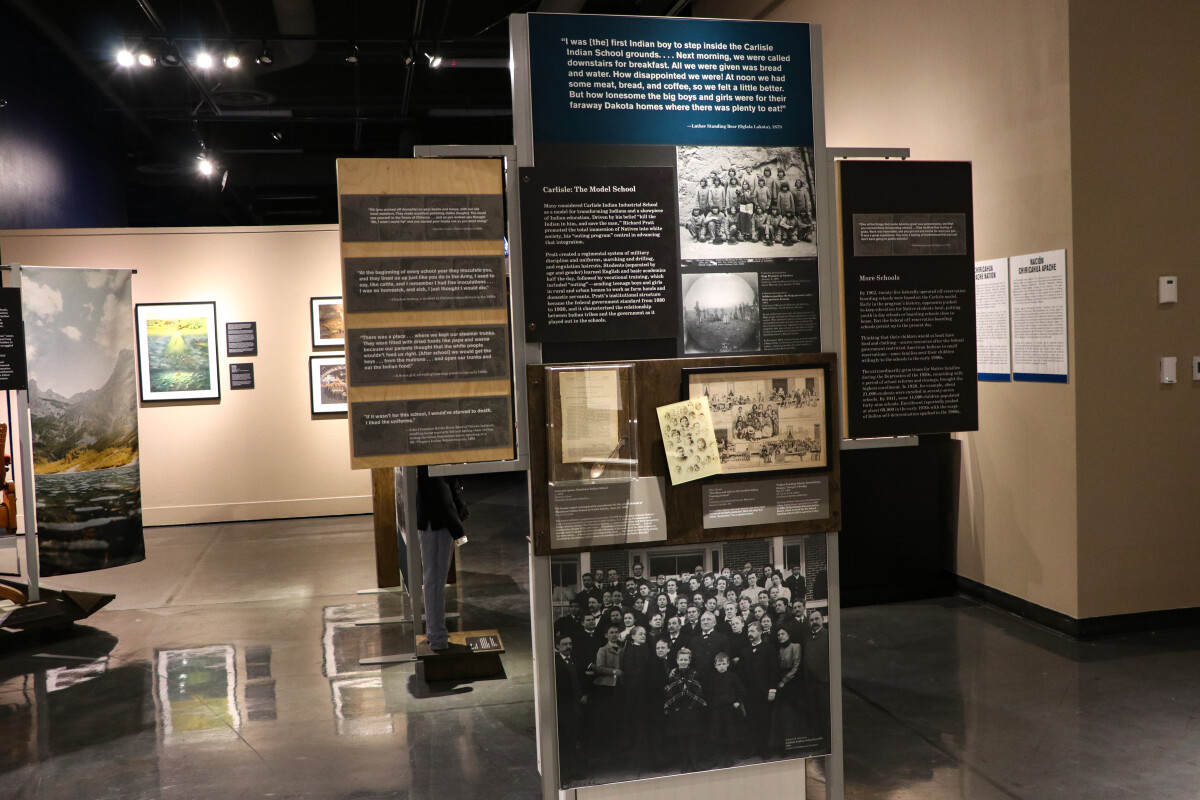
Away from Home Virtual Exhibition
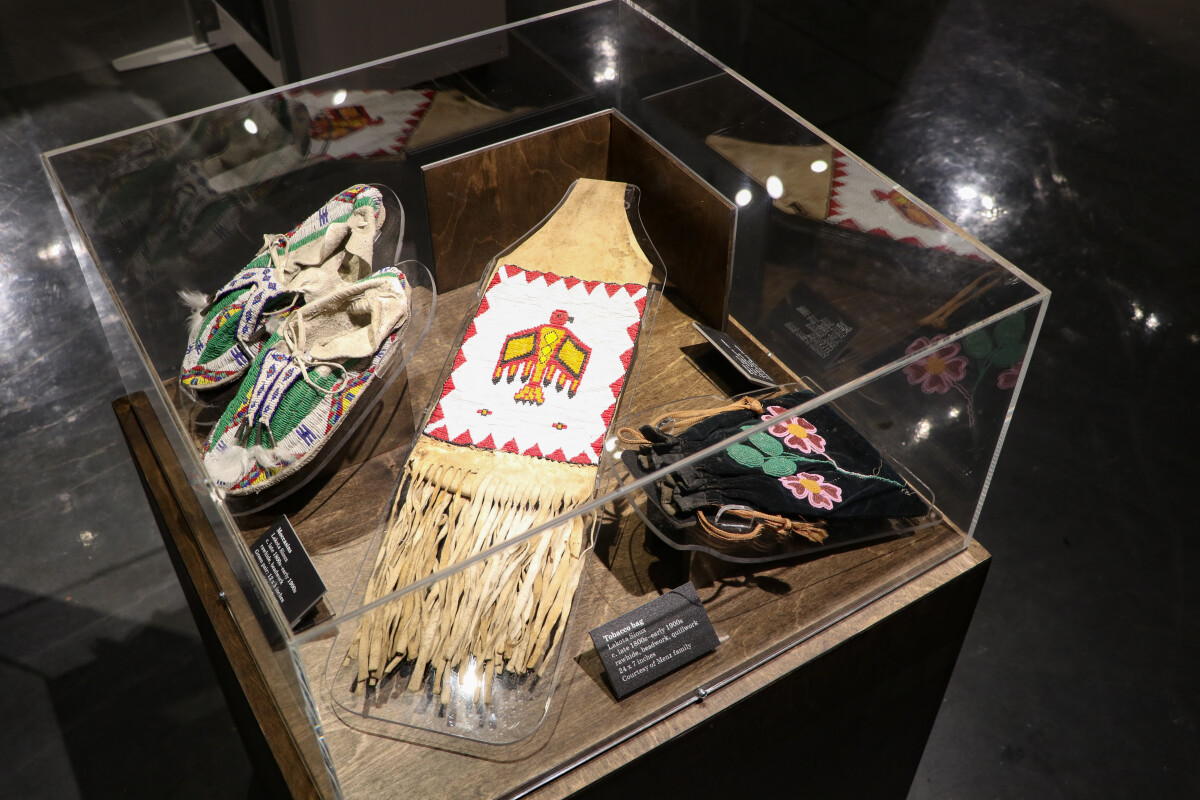
Away from Home Virtual Exhibition
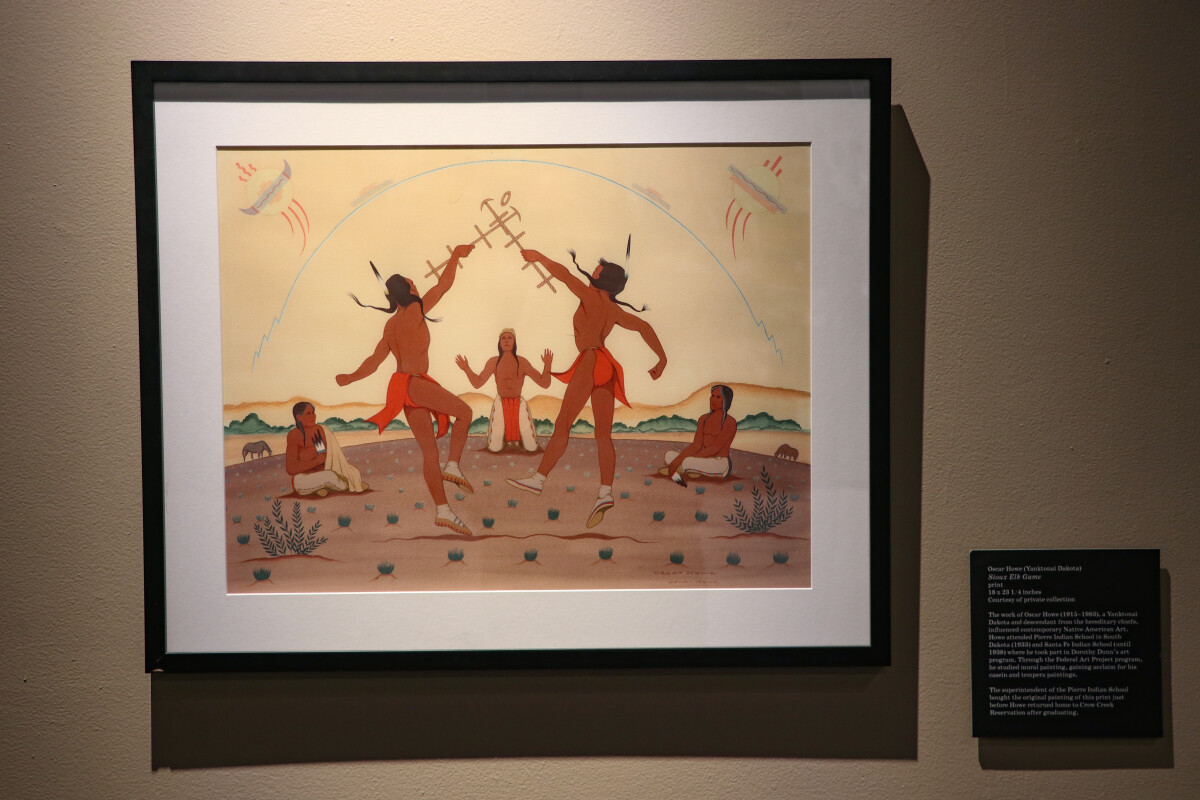
Away from Home Virtual Exhibition
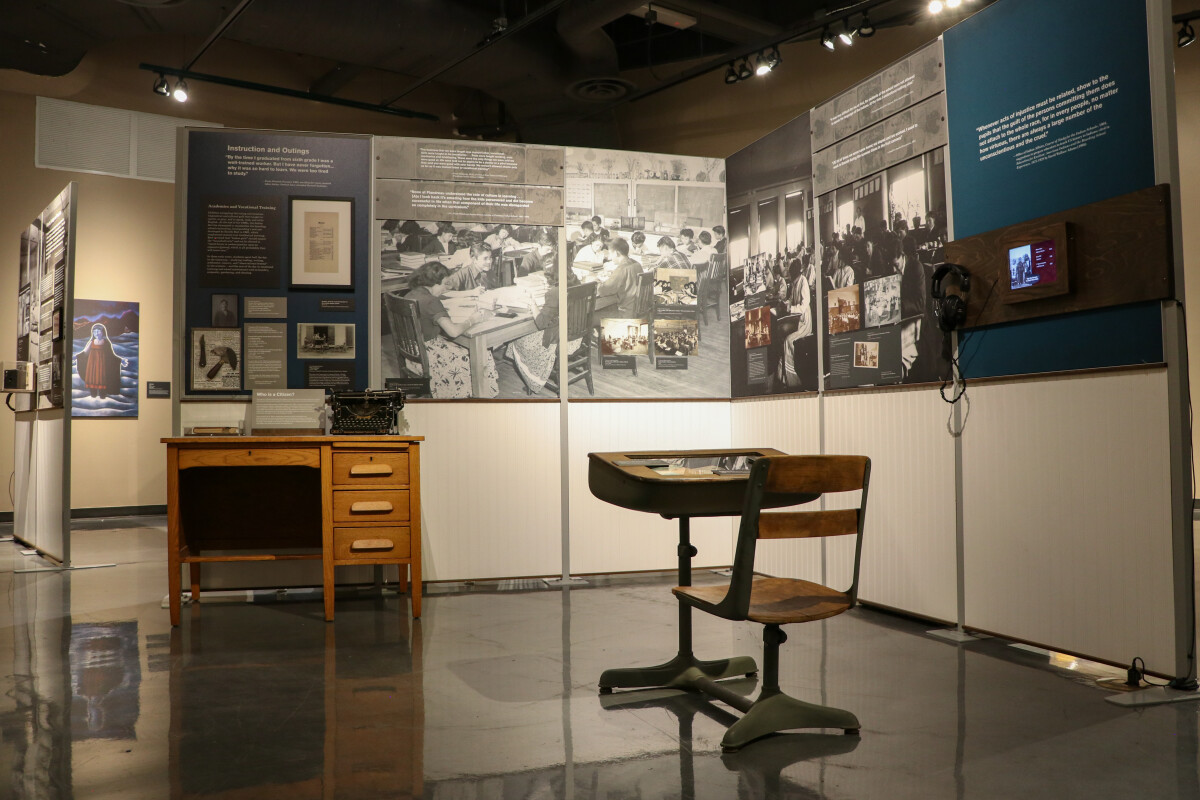
Away from Home Virtual Exhibition
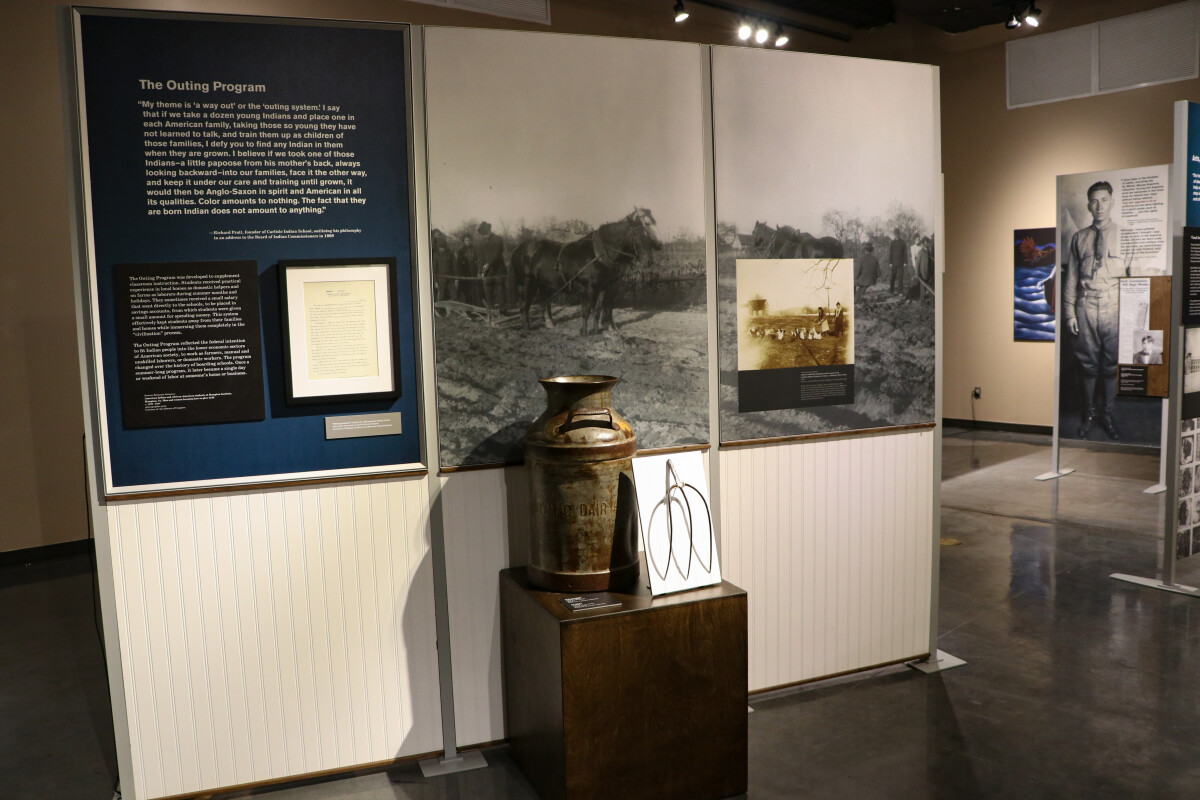
Away from Home Virtual Exhibition
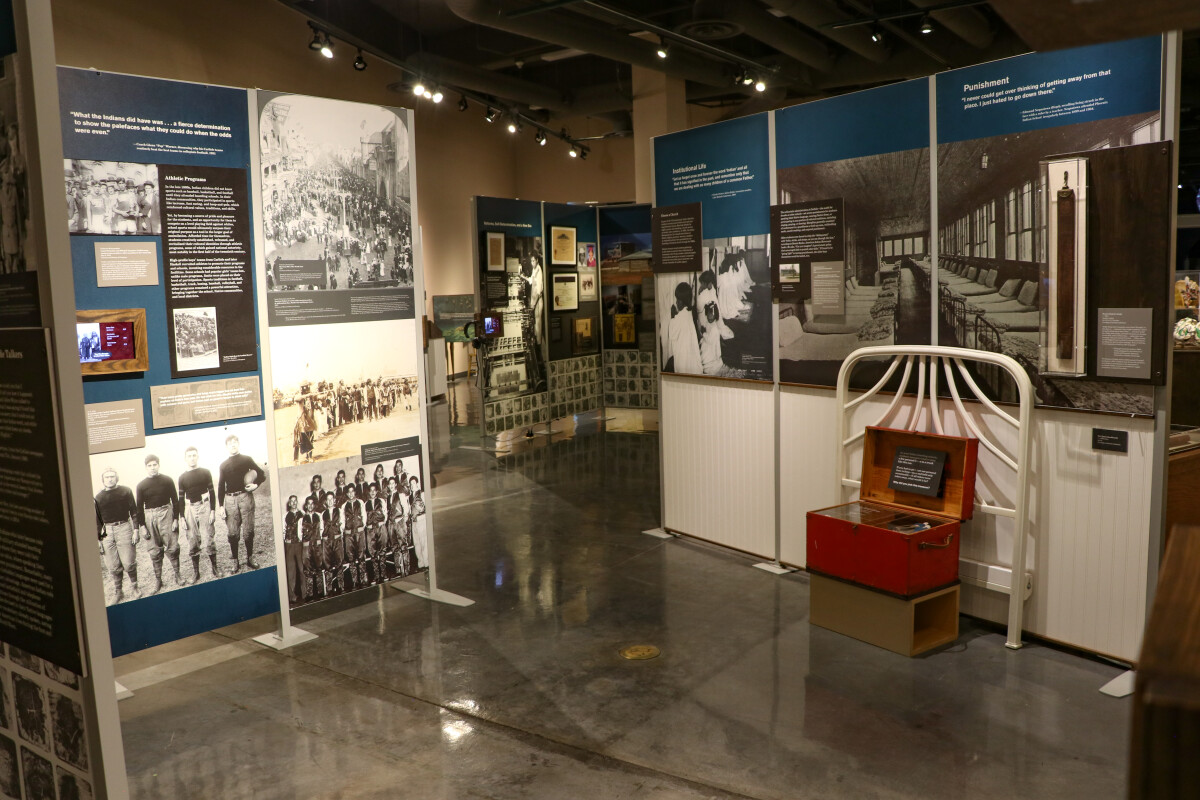
Away from Home Virtual Exhibition

Away from Home Virtual Exhibition
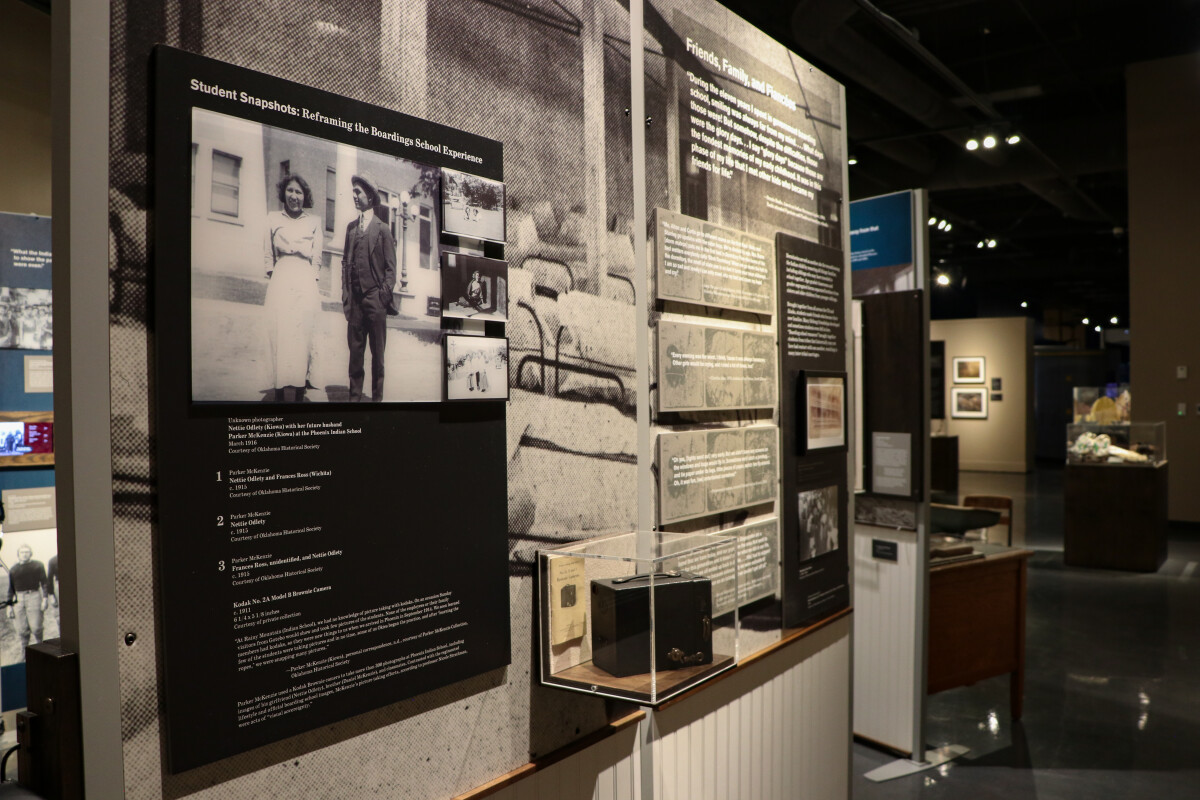
Away from Home Virtual Exhibition
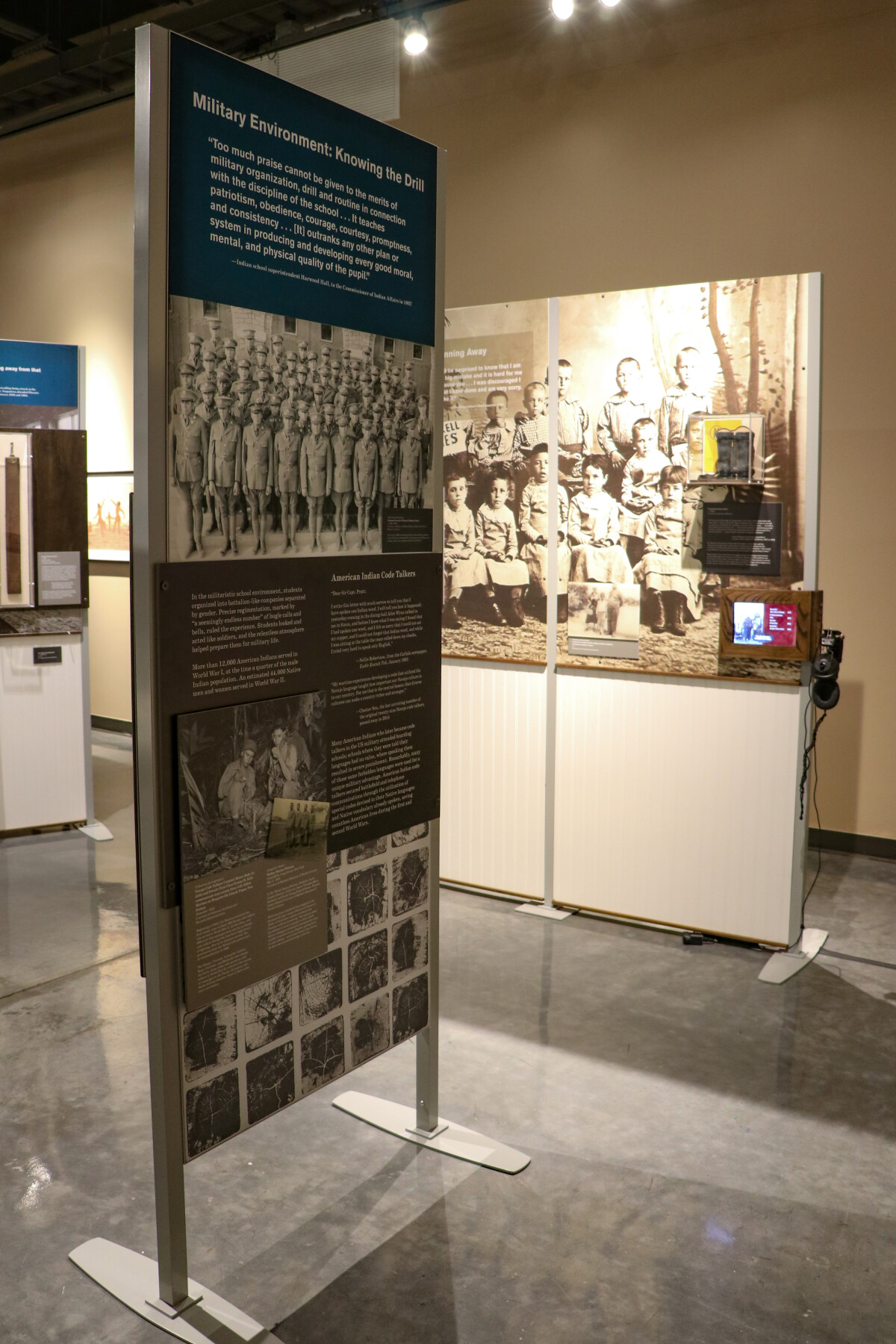
Away from Home Virtual Exhibition
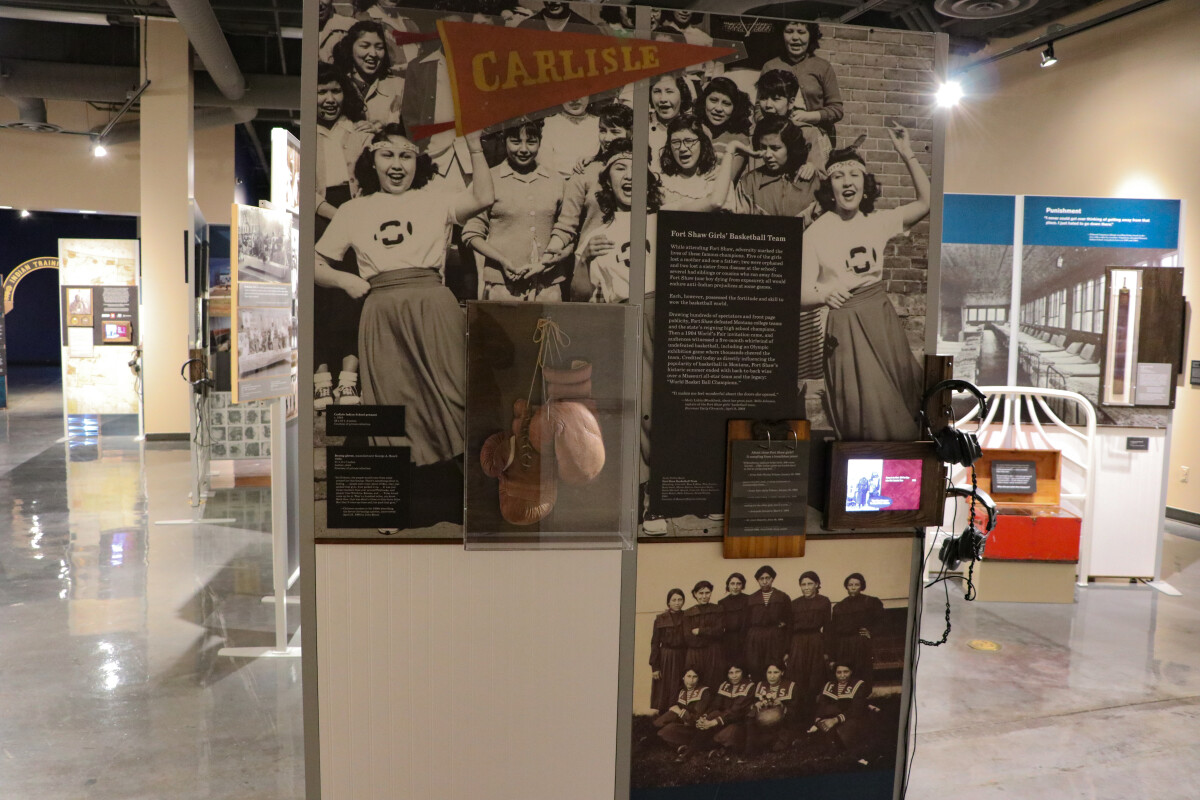
Away from Home Virtual Exhibition
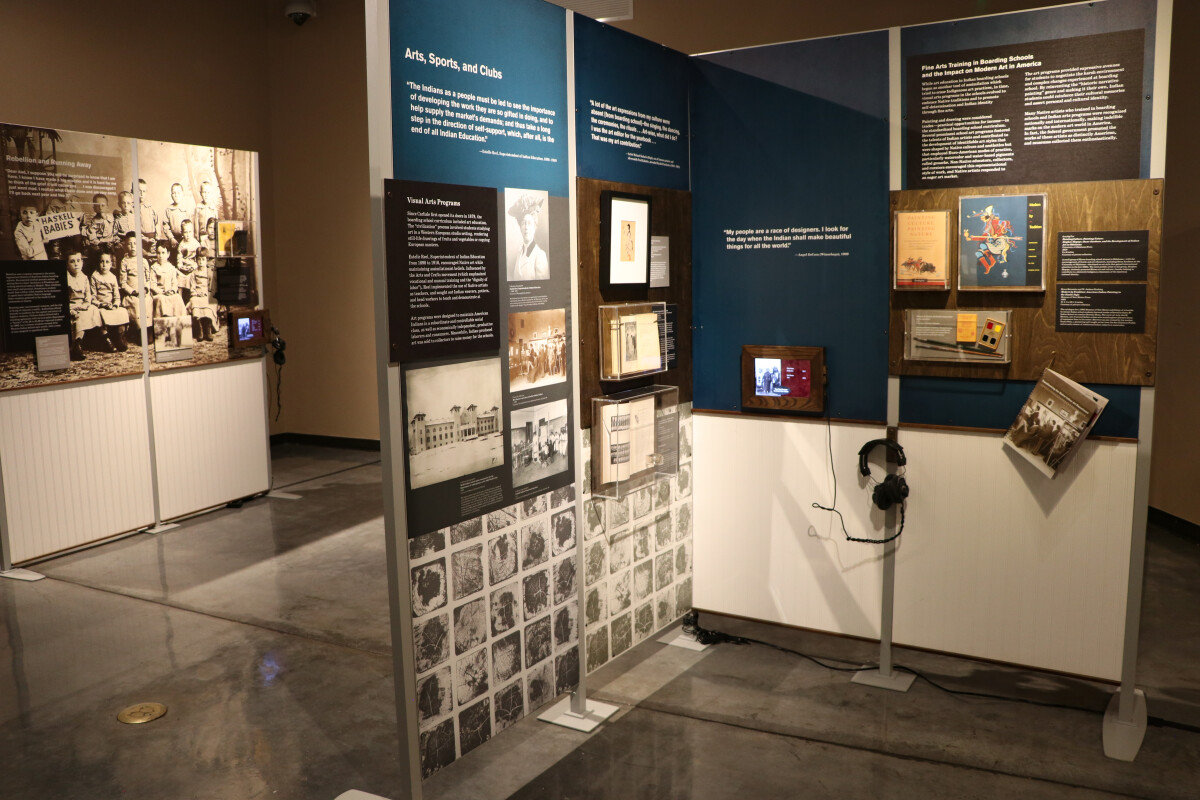
Away from Home Virtual Exhibition
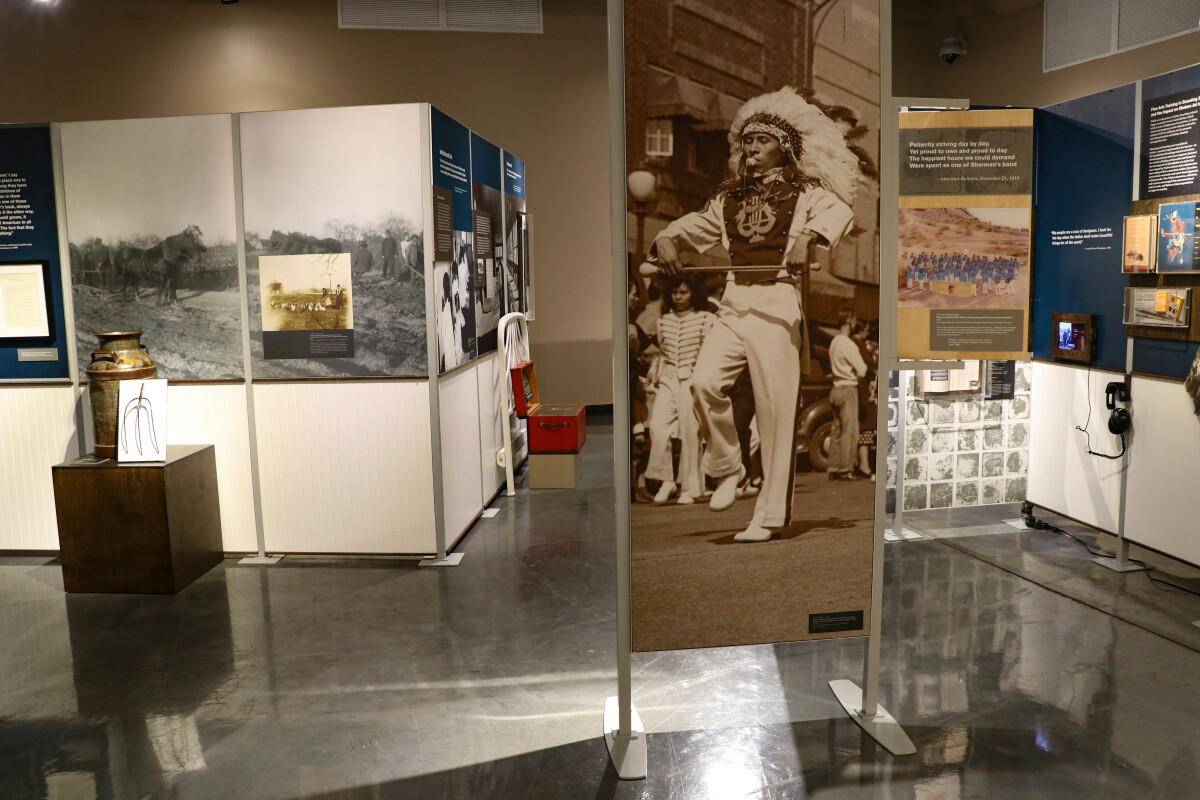
Away from Home Virtual Exhibition
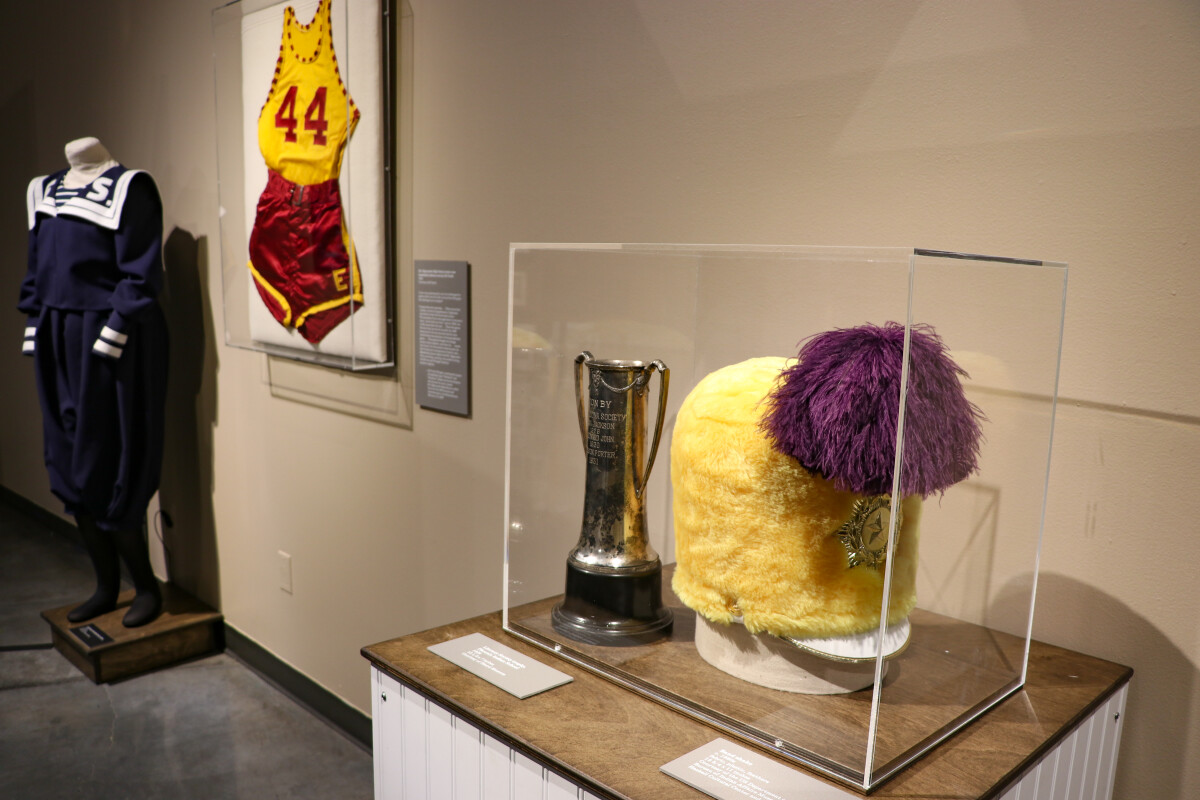
Away from Home Virtual Exhibition
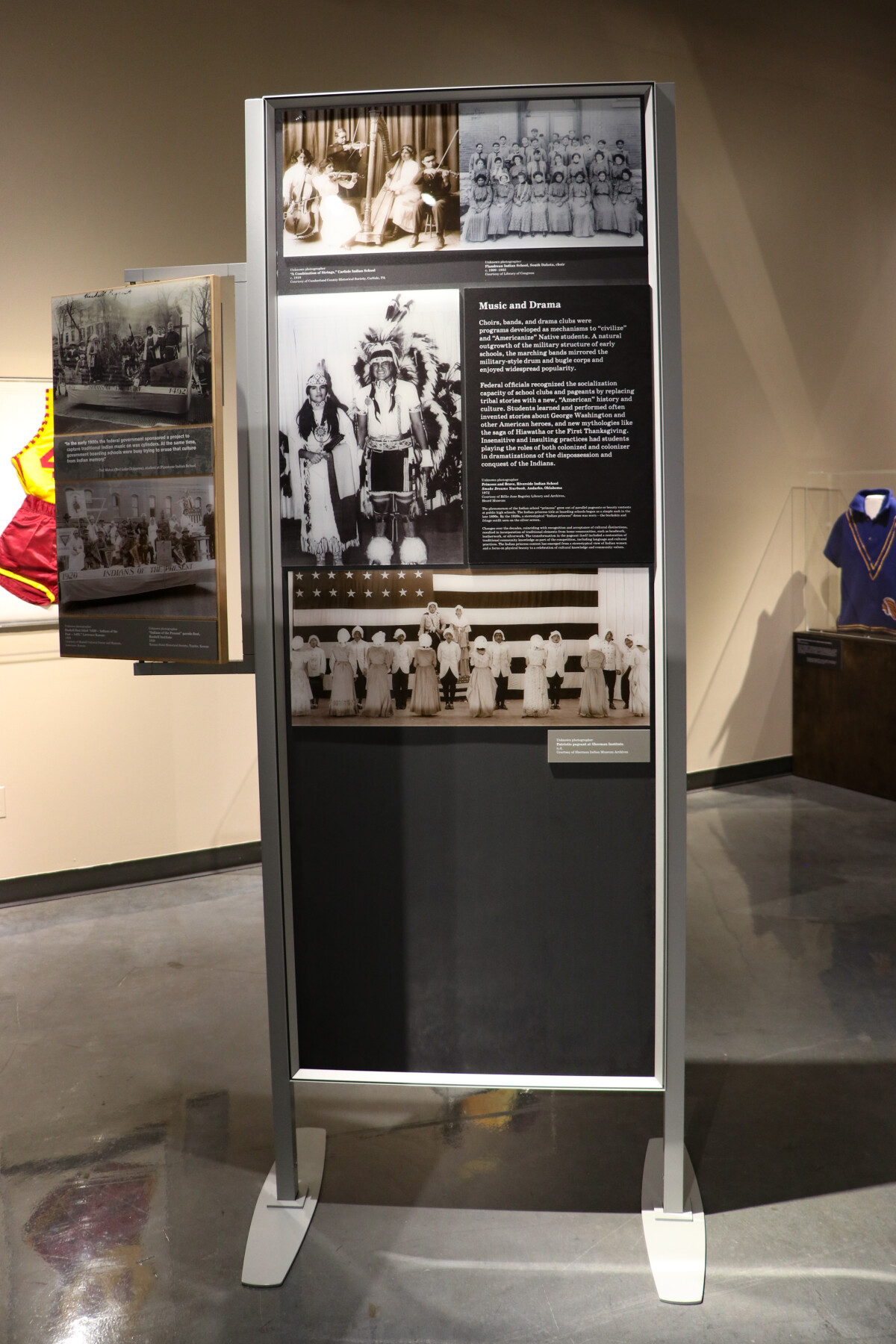
Away from Home Virtual Exhibition
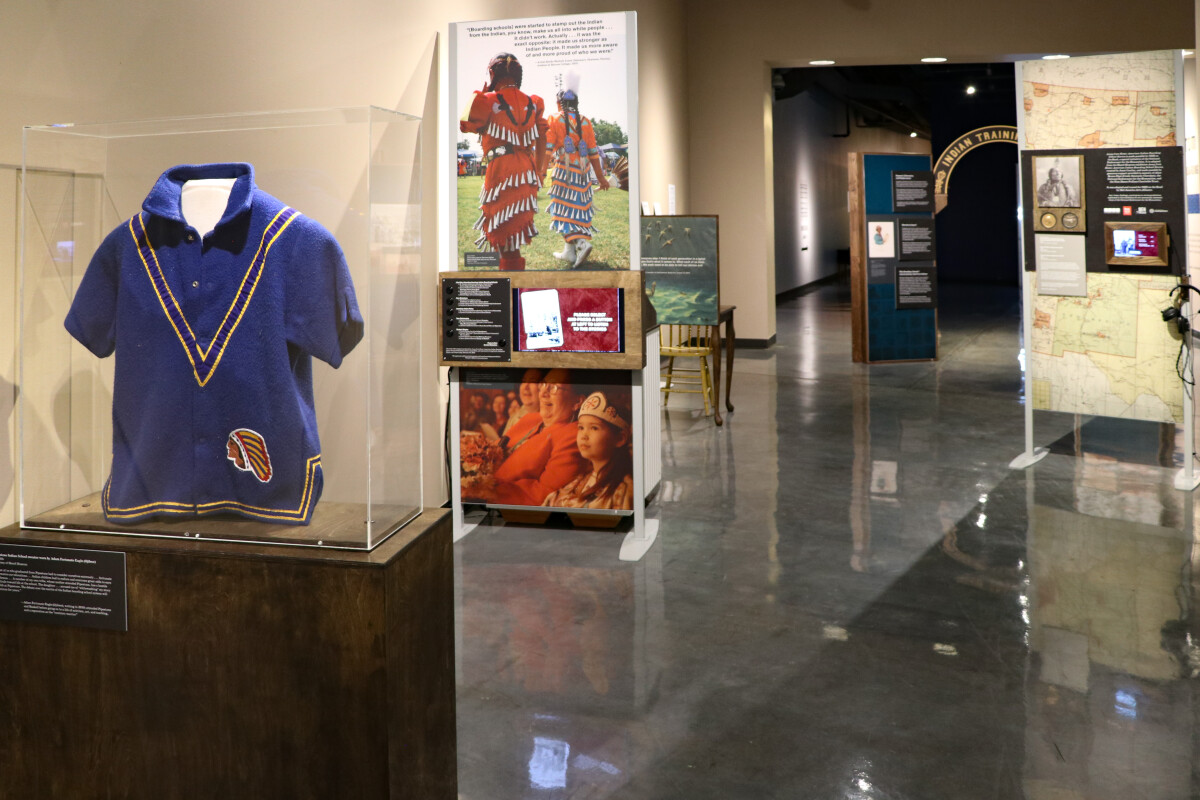
Away from Home Virtual Exhibition
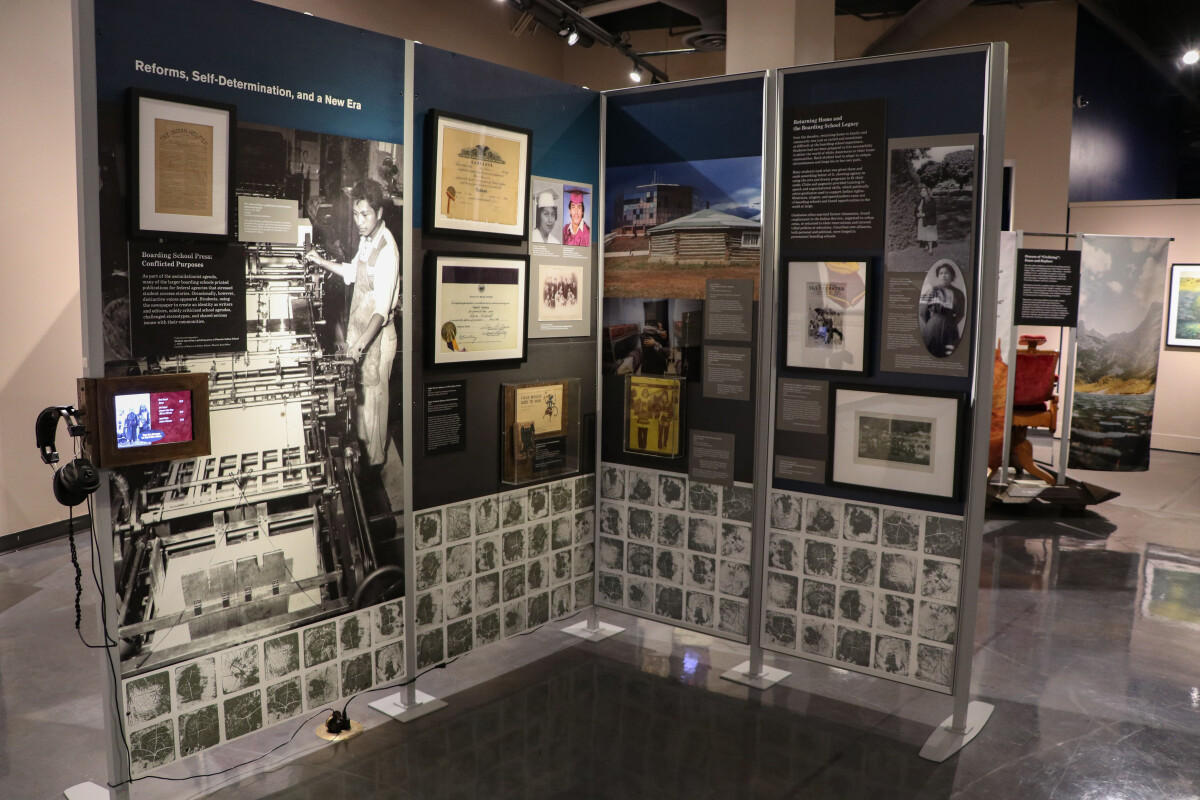
Away from Home Virtual Exhibition
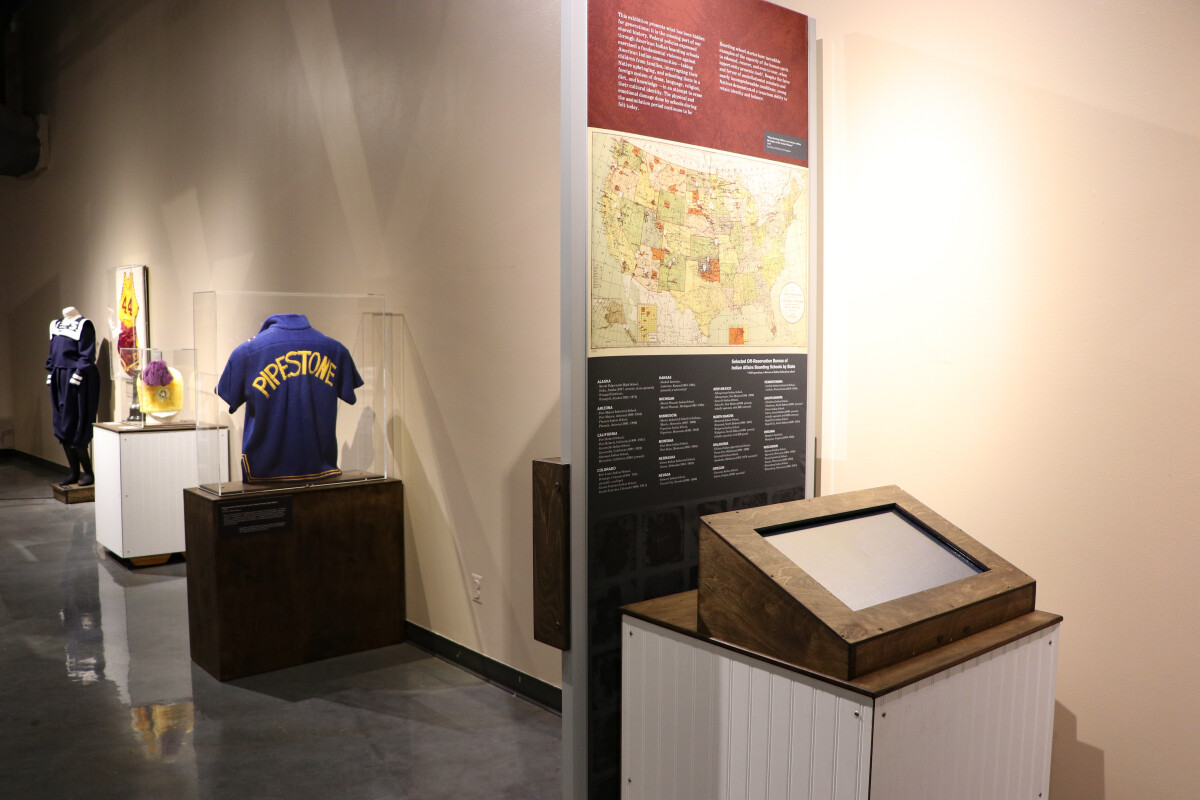
Away from Home Virtual Exhibition
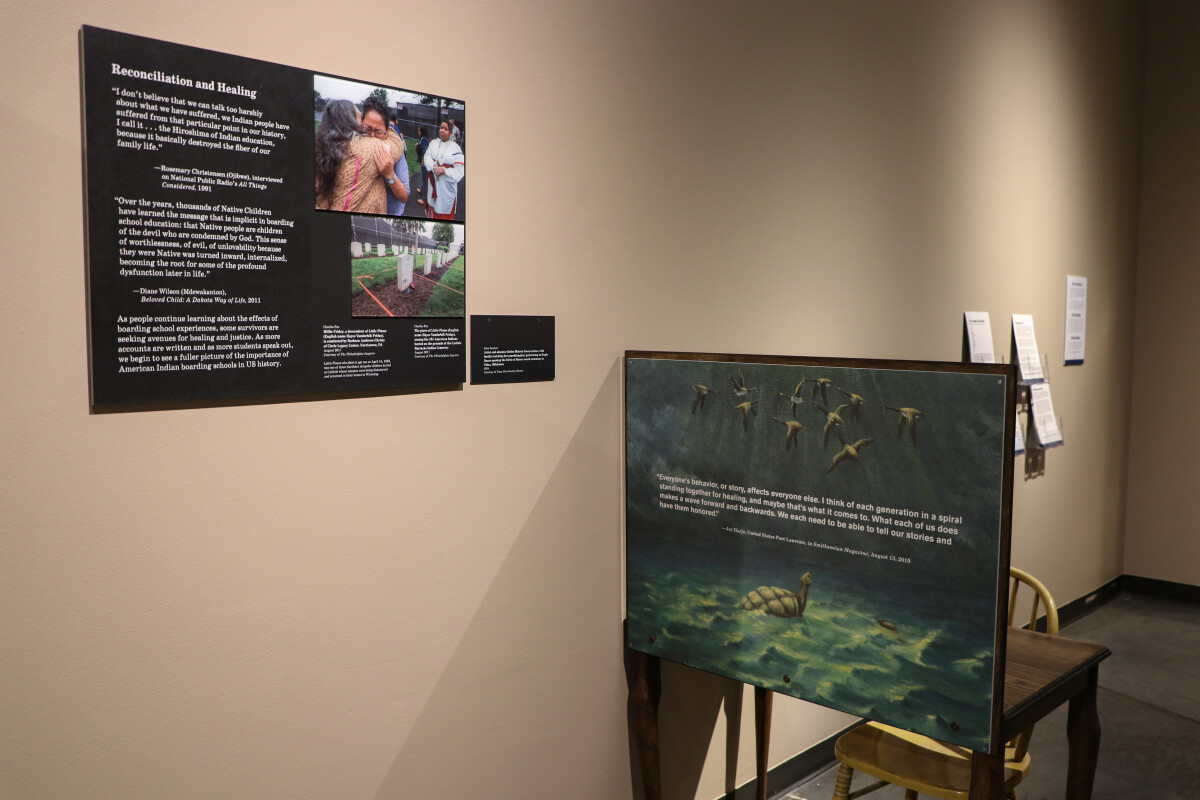
Away from Home Virtual Exhibition
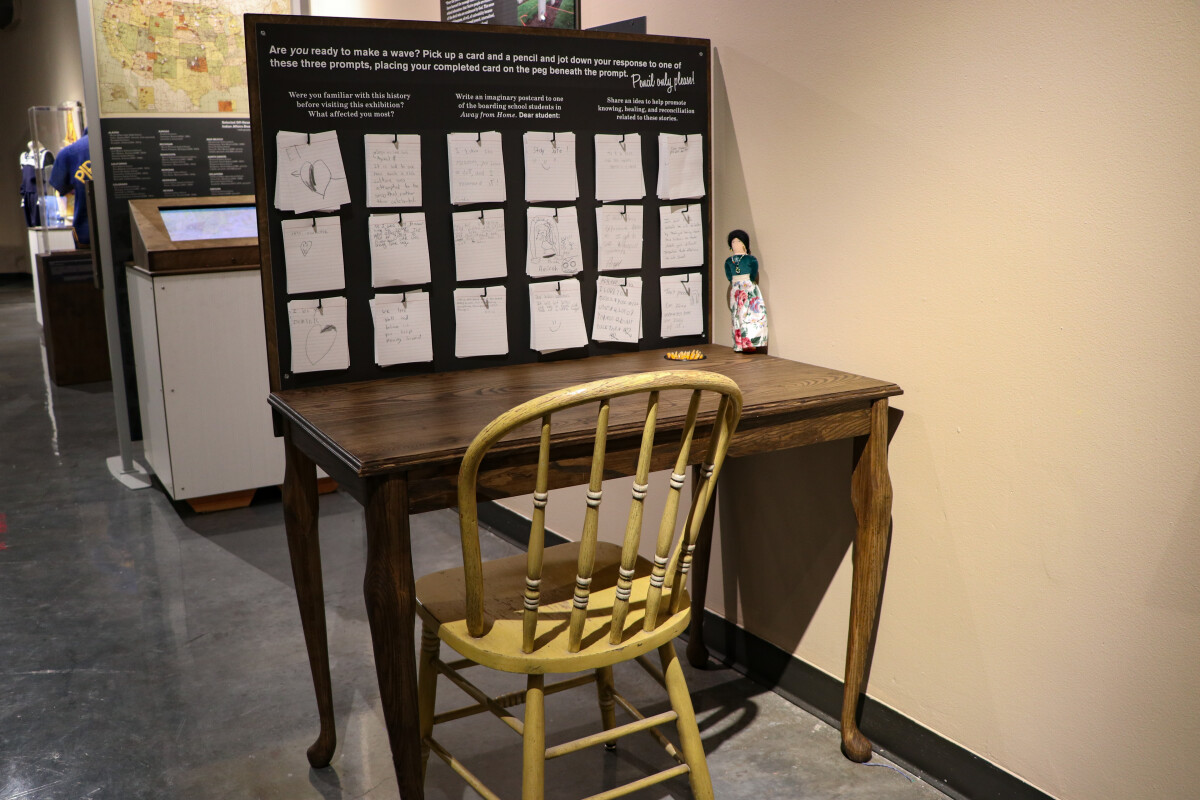
Away from Home: American Indian Boarding School Stories Virtual Exhibition
Beginning in the 1870s, the US government attempted to educate and assimilate American Indians into “civilized” society by placing children—of all ages, from thousands of homes and hundreds of diverse tribes—in distant, residential boarding schools. Many were forcibly taken from their families and communities and stripped of all signs of “Indianness,” even forbidden to speak their own language amongst themselves. Up until the 1930s, students were trained for domestic work and trade in a highly regimented environment. Many children went years without familial contact, and these events had a lasting, generational impact. "Away from Home: American Indian Boarding School Stories" explores off-reservation boarding schools in a kaleidoscope of voices. NOTE: "Away from Home" contains stories of resilience and revitalization, agency and honor. Please be aware that it also contains descriptions of human indignities and hardships and terms that reflect historically racist perspectives and language from past eras. In speaking the truth about acts of seemingly unfathomable violence and suffering in the lives of Native peoples, this exhibition is advised for more mature audience members, grades eight to adult.
Área: Central / Downtown
Fuente: El Paso Museum of History
Cargado por: El Paso Museum of History
Away from Home: American Indian Boarding School Stories Virtual Exhibition
Beginning in the 1870s, the US government attempted to educate and assimilate American Indians into “civilized” society by placing children—of all ages, from thousands of homes and hundreds of diverse tribes—in distant, residential boarding schools. Many were forcibly taken from their families and communities and stripped of all signs of “Indianness,” even forbidden to speak their own language amongst themselves. Up until the 1930s, students were trained for domestic work and trade in a highly regimented environment. Many children went years without familial contact, and these events had a lasting, generational impact. "Away from Home: American Indian Boarding School Stories" explores off-reservation boarding schools in a kaleidoscope of voices. NOTE: "Away from Home" contains stories of resilience and revitalization, agency and honor. Please be aware that it also contains descriptions of human indignities and hardships and terms that reflect historically racist perspectives and language from past eras. In speaking the truth about acts of seemingly unfathomable violence and suffering in the lives of Native peoples, this exhibition is advised for more mature audience members, grades eight to adult.
Área: Central / Downtown
Fuente: El Paso Museum of History
Cargado por: El Paso Museum of History
Away from Home: American Indian Boarding School Stories Virtual Exhibition
Beginning in the 1870s, the US government attempted to educate and assimilate American Indians into “civilized” society by placing children—of all ages, from thousands of homes and hundreds of diverse tribes—in distant, residential boarding schools. Many were forcibly taken from their families and communities and stripped of all signs of “Indianness,” even forbidden to speak their own language amongst themselves. Up until the 1930s, students were trained for domestic work and trade in a highly regimented environment. Many children went years without familial contact, and these events had a lasting, generational impact. "Away from Home: American Indian Boarding School Stories" explores off-reservation boarding schools in a kaleidoscope of voices. NOTE: "Away from Home" contains stories of resilience and revitalization, agency and honor. Please be aware that it also contains descriptions of human indignities and hardships and terms that reflect historically racist perspectives and language from past eras. In speaking the truth about acts of seemingly unfathomable violence and suffering in the lives of Native peoples, this exhibition is advised for more mature audience members, grades eight to adult.
Área: Central / Downtown
Fuente: El Paso Museum of History
Cargado por: El Paso Museum of History
Away from Home: American Indian Boarding School Stories Virtual Exhibition
Beginning in the 1870s, the US government attempted to educate and assimilate American Indians into “civilized” society by placing children—of all ages, from thousands of homes and hundreds of diverse tribes—in distant, residential boarding schools. Many were forcibly taken from their families and communities and stripped of all signs of “Indianness,” even forbidden to speak their own language amongst themselves. Up until the 1930s, students were trained for domestic work and trade in a highly regimented environment. Many children went years without familial contact, and these events had a lasting, generational impact. "Away from Home: American Indian Boarding School Stories" explores off-reservation boarding schools in a kaleidoscope of voices. NOTE: "Away from Home" contains stories of resilience and revitalization, agency and honor. Please be aware that it also contains descriptions of human indignities and hardships and terms that reflect historically racist perspectives and language from past eras. In speaking the truth about acts of seemingly unfathomable violence and suffering in the lives of Native peoples, this exhibition is advised for more mature audience members, grades eight to adult.
Área: Central / Downtown
Fuente: El Paso Museum of History
Cargado por: El Paso Museum of History
Away from Home: American Indian Boarding School Stories Virtual Exhibition
Beginning in the 1870s, the US government attempted to educate and assimilate American Indians into “civilized” society by placing children—of all ages, from thousands of homes and hundreds of diverse tribes—in distant, residential boarding schools. Many were forcibly taken from their families and communities and stripped of all signs of “Indianness,” even forbidden to speak their own language amongst themselves. Up until the 1930s, students were trained for domestic work and trade in a highly regimented environment. Many children went years without familial contact, and these events had a lasting, generational impact. "Away from Home: American Indian Boarding School Stories" explores off-reservation boarding schools in a kaleidoscope of voices. NOTE: "Away from Home" contains stories of resilience and revitalization, agency and honor. Please be aware that it also contains descriptions of human indignities and hardships and terms that reflect historically racist perspectives and language from past eras. In speaking the truth about acts of seemingly unfathomable violence and suffering in the lives of Native peoples, this exhibition is advised for more mature audience members, grades eight to adult.
Área: Central / Downtown
Fuente: El Paso Museum of History
Cargado por: El Paso Museum of History
Away from Home: American Indian Boarding School Stories Virtual Exhibition
Beginning in the 1870s, the US government attempted to educate and assimilate American Indians into “civilized” society by placing children—of all ages, from thousands of homes and hundreds of diverse tribes—in distant, residential boarding schools. Many were forcibly taken from their families and communities and stripped of all signs of “Indianness,” even forbidden to speak their own language amongst themselves. Up until the 1930s, students were trained for domestic work and trade in a highly regimented environment. Many children went years without familial contact, and these events had a lasting, generational impact. "Away from Home: American Indian Boarding School Stories" explores off-reservation boarding schools in a kaleidoscope of voices. NOTE: "Away from Home" contains stories of resilience and revitalization, agency and honor. Please be aware that it also contains descriptions of human indignities and hardships and terms that reflect historically racist perspectives and language from past eras. In speaking the truth about acts of seemingly unfathomable violence and suffering in the lives of Native peoples, this exhibition is advised for more mature audience members, grades eight to adult.
Área: Central / Downtown
Fuente: El Paso Museum of History
Cargado por: El Paso Museum of History
Away from Home: American Indian Boarding School Stories Virtual Exhibition
Beginning in the 1870s, the US government attempted to educate and assimilate American Indians into “civilized” society by placing children—of all ages, from thousands of homes and hundreds of diverse tribes—in distant, residential boarding schools. Many were forcibly taken from their families and communities and stripped of all signs of “Indianness,” even forbidden to speak their own language amongst themselves. Up until the 1930s, students were trained for domestic work and trade in a highly regimented environment. Many children went years without familial contact, and these events had a lasting, generational impact. "Away from Home: American Indian Boarding School Stories" explores off-reservation boarding schools in a kaleidoscope of voices. NOTE: "Away from Home" contains stories of resilience and revitalization, agency and honor. Please be aware that it also contains descriptions of human indignities and hardships and terms that reflect historically racist perspectives and language from past eras. In speaking the truth about acts of seemingly unfathomable violence and suffering in the lives of Native peoples, this exhibition is advised for more mature audience members, grades eight to adult.
Área: Central / Downtown
Fuente: El Paso Museum of History
Cargado por: El Paso Museum of History
Away from Home: American Indian Boarding School Stories Virtual Exhibition
Beginning in the 1870s, the US government attempted to educate and assimilate American Indians into “civilized” society by placing children—of all ages, from thousands of homes and hundreds of diverse tribes—in distant, residential boarding schools. Many were forcibly taken from their families and communities and stripped of all signs of “Indianness,” even forbidden to speak their own language amongst themselves. Up until the 1930s, students were trained for domestic work and trade in a highly regimented environment. Many children went years without familial contact, and these events had a lasting, generational impact. "Away from Home: American Indian Boarding School Stories" explores off-reservation boarding schools in a kaleidoscope of voices. NOTE: "Away from Home" contains stories of resilience and revitalization, agency and honor. Please be aware that it also contains descriptions of human indignities and hardships and terms that reflect historically racist perspectives and language from past eras. In speaking the truth about acts of seemingly unfathomable violence and suffering in the lives of Native peoples, this exhibition is advised for more mature audience members, grades eight to adult.
Área: Central / Downtown
Fuente: El Paso Museum of History
Cargado por: El Paso Museum of History
Away from Home: American Indian Boarding School Stories Virtual Exhibition
Beginning in the 1870s, the US government attempted to educate and assimilate American Indians into “civilized” society by placing children—of all ages, from thousands of homes and hundreds of diverse tribes—in distant, residential boarding schools. Many were forcibly taken from their families and communities and stripped of all signs of “Indianness,” even forbidden to speak their own language amongst themselves. Up until the 1930s, students were trained for domestic work and trade in a highly regimented environment. Many children went years without familial contact, and these events had a lasting, generational impact. "Away from Home: American Indian Boarding School Stories" explores off-reservation boarding schools in a kaleidoscope of voices. NOTE: "Away from Home" contains stories of resilience and revitalization, agency and honor. Please be aware that it also contains descriptions of human indignities and hardships and terms that reflect historically racist perspectives and language from past eras. In speaking the truth about acts of seemingly unfathomable violence and suffering in the lives of Native peoples, this exhibition is advised for more mature audience members, grades eight to adult.
Área: Central / Downtown
Fuente: El Paso Museum of History
Cargado por: El Paso Museum of History
Away from Home: American Indian Boarding School Stories Virtual Exhibition
Beginning in the 1870s, the US government attempted to educate and assimilate American Indians into “civilized” society by placing children—of all ages, from thousands of homes and hundreds of diverse tribes—in distant, residential boarding schools. Many were forcibly taken from their families and communities and stripped of all signs of “Indianness,” even forbidden to speak their own language amongst themselves. Up until the 1930s, students were trained for domestic work and trade in a highly regimented environment. Many children went years without familial contact, and these events had a lasting, generational impact. "Away from Home: American Indian Boarding School Stories" explores off-reservation boarding schools in a kaleidoscope of voices. NOTE: "Away from Home" contains stories of resilience and revitalization, agency and honor. Please be aware that it also contains descriptions of human indignities and hardships and terms that reflect historically racist perspectives and language from past eras. In speaking the truth about acts of seemingly unfathomable violence and suffering in the lives of Native peoples, this exhibition is advised for more mature audience members, grades eight to adult.
Área: Central / Downtown
Fuente: El Paso Museum of History
Cargado por: El Paso Museum of History
Away from Home: American Indian Boarding School Stories Virtual Exhibition
Beginning in the 1870s, the US government attempted to educate and assimilate American Indians into “civilized” society by placing children—of all ages, from thousands of homes and hundreds of diverse tribes—in distant, residential boarding schools. Many were forcibly taken from their families and communities and stripped of all signs of “Indianness,” even forbidden to speak their own language amongst themselves. Up until the 1930s, students were trained for domestic work and trade in a highly regimented environment. Many children went years without familial contact, and these events had a lasting, generational impact. "Away from Home: American Indian Boarding School Stories" explores off-reservation boarding schools in a kaleidoscope of voices. NOTE: "Away from Home" contains stories of resilience and revitalization, agency and honor. Please be aware that it also contains descriptions of human indignities and hardships and terms that reflect historically racist perspectives and language from past eras. In speaking the truth about acts of seemingly unfathomable violence and suffering in the lives of Native peoples, this exhibition is advised for more mature audience members, grades eight to adult.
Área: Central / Downtown
Fuente: El Paso Museum of History
Cargado por: El Paso Museum of History
Away from Home: American Indian Boarding School Stories Virtual Exhibition
Beginning in the 1870s, the US government attempted to educate and assimilate American Indians into “civilized” society by placing children—of all ages, from thousands of homes and hundreds of diverse tribes—in distant, residential boarding schools. Many were forcibly taken from their families and communities and stripped of all signs of “Indianness,” even forbidden to speak their own language amongst themselves. Up until the 1930s, students were trained for domestic work and trade in a highly regimented environment. Many children went years without familial contact, and these events had a lasting, generational impact. "Away from Home: American Indian Boarding School Stories" explores off-reservation boarding schools in a kaleidoscope of voices. NOTE: "Away from Home" contains stories of resilience and revitalization, agency and honor. Please be aware that it also contains descriptions of human indignities and hardships and terms that reflect historically racist perspectives and language from past eras. In speaking the truth about acts of seemingly unfathomable violence and suffering in the lives of Native peoples, this exhibition is advised for more mature audience members, grades eight to adult.
Área: Central / Downtown
Fuente: El Paso Museum of History
Cargado por: El Paso Museum of History
Away from Home: American Indian Boarding School Stories Virtual Exhibition
Beginning in the 1870s, the US government attempted to educate and assimilate American Indians into “civilized” society by placing children—of all ages, from thousands of homes and hundreds of diverse tribes—in distant, residential boarding schools. Many were forcibly taken from their families and communities and stripped of all signs of “Indianness,” even forbidden to speak their own language amongst themselves. Up until the 1930s, students were trained for domestic work and trade in a highly regimented environment. Many children went years without familial contact, and these events had a lasting, generational impact. "Away from Home: American Indian Boarding School Stories" explores off-reservation boarding schools in a kaleidoscope of voices. NOTE: "Away from Home" contains stories of resilience and revitalization, agency and honor. Please be aware that it also contains descriptions of human indignities and hardships and terms that reflect historically racist perspectives and language from past eras. In speaking the truth about acts of seemingly unfathomable violence and suffering in the lives of Native peoples, this exhibition is advised for more mature audience members, grades eight to adult.
Área: Central / Downtown
Fuente: El Paso Museum of History
Cargado por: El Paso Museum of History
Away from Home: American Indian Boarding School Stories Virtual Exhibition
Beginning in the 1870s, the US government attempted to educate and assimilate American Indians into “civilized” society by placing children—of all ages, from thousands of homes and hundreds of diverse tribes—in distant, residential boarding schools. Many were forcibly taken from their families and communities and stripped of all signs of “Indianness,” even forbidden to speak their own language amongst themselves. Up until the 1930s, students were trained for domestic work and trade in a highly regimented environment. Many children went years without familial contact, and these events had a lasting, generational impact. "Away from Home: American Indian Boarding School Stories" explores off-reservation boarding schools in a kaleidoscope of voices. NOTE: "Away from Home" contains stories of resilience and revitalization, agency and honor. Please be aware that it also contains descriptions of human indignities and hardships and terms that reflect historically racist perspectives and language from past eras. In speaking the truth about acts of seemingly unfathomable violence and suffering in the lives of Native peoples, this exhibition is advised for more mature audience members, grades eight to adult.
Área: Central / Downtown
Fuente: El Paso Museum of History
Cargado por: El Paso Museum of History
Away from Home: American Indian Boarding School Stories Virtual Exhibition
Beginning in the 1870s, the US government attempted to educate and assimilate American Indians into “civilized” society by placing children—of all ages, from thousands of homes and hundreds of diverse tribes—in distant, residential boarding schools. Many were forcibly taken from their families and communities and stripped of all signs of “Indianness,” even forbidden to speak their own language amongst themselves. Up until the 1930s, students were trained for domestic work and trade in a highly regimented environment. Many children went years without familial contact, and these events had a lasting, generational impact. "Away from Home: American Indian Boarding School Stories" explores off-reservation boarding schools in a kaleidoscope of voices. NOTE: "Away from Home" contains stories of resilience and revitalization, agency and honor. Please be aware that it also contains descriptions of human indignities and hardships and terms that reflect historically racist perspectives and language from past eras. In speaking the truth about acts of seemingly unfathomable violence and suffering in the lives of Native peoples, this exhibition is advised for more mature audience members, grades eight to adult.
Área: Central / Downtown
Fuente: El Paso Museum of History
Cargado por: El Paso Museum of History
Away from Home: American Indian Boarding School Stories Virtual Exhibition
Beginning in the 1870s, the US government attempted to educate and assimilate American Indians into “civilized” society by placing children—of all ages, from thousands of homes and hundreds of diverse tribes—in distant, residential boarding schools. Many were forcibly taken from their families and communities and stripped of all signs of “Indianness,” even forbidden to speak their own language amongst themselves. Up until the 1930s, students were trained for domestic work and trade in a highly regimented environment. Many children went years without familial contact, and these events had a lasting, generational impact. "Away from Home: American Indian Boarding School Stories" explores off-reservation boarding schools in a kaleidoscope of voices. NOTE: "Away from Home" contains stories of resilience and revitalization, agency and honor. Please be aware that it also contains descriptions of human indignities and hardships and terms that reflect historically racist perspectives and language from past eras. In speaking the truth about acts of seemingly unfathomable violence and suffering in the lives of Native peoples, this exhibition is advised for more mature audience members, grades eight to adult.
Área: Central / Downtown
Fuente: El Paso Museum of History
Cargado por: El Paso Museum of History
Away from Home: American Indian Boarding School Stories Virtual Exhibition
Beginning in the 1870s, the US government attempted to educate and assimilate American Indians into “civilized” society by placing children—of all ages, from thousands of homes and hundreds of diverse tribes—in distant, residential boarding schools. Many were forcibly taken from their families and communities and stripped of all signs of “Indianness,” even forbidden to speak their own language amongst themselves. Up until the 1930s, students were trained for domestic work and trade in a highly regimented environment. Many children went years without familial contact, and these events had a lasting, generational impact. "Away from Home: American Indian Boarding School Stories" explores off-reservation boarding schools in a kaleidoscope of voices. NOTE: "Away from Home" contains stories of resilience and revitalization, agency and honor. Please be aware that it also contains descriptions of human indignities and hardships and terms that reflect historically racist perspectives and language from past eras. In speaking the truth about acts of seemingly unfathomable violence and suffering in the lives of Native peoples, this exhibition is advised for more mature audience members, grades eight to adult.
Área: Central / Downtown
Fuente: El Paso Museum of History
Cargado por: El Paso Museum of History
Away from Home: American Indian Boarding School Stories Virtual Exhibition
Beginning in the 1870s, the US government attempted to educate and assimilate American Indians into “civilized” society by placing children—of all ages, from thousands of homes and hundreds of diverse tribes—in distant, residential boarding schools. Many were forcibly taken from their families and communities and stripped of all signs of “Indianness,” even forbidden to speak their own language amongst themselves. Up until the 1930s, students were trained for domestic work and trade in a highly regimented environment. Many children went years without familial contact, and these events had a lasting, generational impact. "Away from Home: American Indian Boarding School Stories" explores off-reservation boarding schools in a kaleidoscope of voices. NOTE: "Away from Home" contains stories of resilience and revitalization, agency and honor. Please be aware that it also contains descriptions of human indignities and hardships and terms that reflect historically racist perspectives and language from past eras. In speaking the truth about acts of seemingly unfathomable violence and suffering in the lives of Native peoples, this exhibition is advised for more mature audience members, grades eight to adult.
Área: Central / Downtown
Fuente: El Paso Museum of History
Cargado por: El Paso Museum of History
Away from Home: American Indian Boarding School Stories Virtual Exhibition
Beginning in the 1870s, the US government attempted to educate and assimilate American Indians into “civilized” society by placing children—of all ages, from thousands of homes and hundreds of diverse tribes—in distant, residential boarding schools. Many were forcibly taken from their families and communities and stripped of all signs of “Indianness,” even forbidden to speak their own language amongst themselves. Up until the 1930s, students were trained for domestic work and trade in a highly regimented environment. Many children went years without familial contact, and these events had a lasting, generational impact. "Away from Home: American Indian Boarding School Stories" explores off-reservation boarding schools in a kaleidoscope of voices. NOTE: "Away from Home" contains stories of resilience and revitalization, agency and honor. Please be aware that it also contains descriptions of human indignities and hardships and terms that reflect historically racist perspectives and language from past eras. In speaking the truth about acts of seemingly unfathomable violence and suffering in the lives of Native peoples, this exhibition is advised for more mature audience members, grades eight to adult.
Área: Central / Downtown
Fuente: El Paso Museum of History
Cargado por: El Paso Museum of History
Away from Home: American Indian Boarding School Stories Virtual Exhibition
Beginning in the 1870s, the US government attempted to educate and assimilate American Indians into “civilized” society by placing children—of all ages, from thousands of homes and hundreds of diverse tribes—in distant, residential boarding schools. Many were forcibly taken from their families and communities and stripped of all signs of “Indianness,” even forbidden to speak their own language amongst themselves. Up until the 1930s, students were trained for domestic work and trade in a highly regimented environment. Many children went years without familial contact, and these events had a lasting, generational impact. "Away from Home: American Indian Boarding School Stories" explores off-reservation boarding schools in a kaleidoscope of voices. NOTE: "Away from Home" contains stories of resilience and revitalization, agency and honor. Please be aware that it also contains descriptions of human indignities and hardships and terms that reflect historically racist perspectives and language from past eras. In speaking the truth about acts of seemingly unfathomable violence and suffering in the lives of Native peoples, this exhibition is advised for more mature audience members, grades eight to adult.
Área: Central / Downtown
Fuente: El Paso Museum of History
Cargado por: El Paso Museum of History
Away from Home: American Indian Boarding School Stories Virtual Exhibition
Beginning in the 1870s, the US government attempted to educate and assimilate American Indians into “civilized” society by placing children—of all ages, from thousands of homes and hundreds of diverse tribes—in distant, residential boarding schools. Many were forcibly taken from their families and communities and stripped of all signs of “Indianness,” even forbidden to speak their own language amongst themselves. Up until the 1930s, students were trained for domestic work and trade in a highly regimented environment. Many children went years without familial contact, and these events had a lasting, generational impact. "Away from Home: American Indian Boarding School Stories" explores off-reservation boarding schools in a kaleidoscope of voices. NOTE: "Away from Home" contains stories of resilience and revitalization, agency and honor. Please be aware that it also contains descriptions of human indignities and hardships and terms that reflect historically racist perspectives and language from past eras. In speaking the truth about acts of seemingly unfathomable violence and suffering in the lives of Native peoples, this exhibition is advised for more mature audience members, grades eight to adult.
Área: Central / Downtown
Fuente: El Paso Museum of History
Cargado por: El Paso Museum of History
Away from Home: American Indian Boarding School Stories Virtual Exhibition
Beginning in the 1870s, the US government attempted to educate and assimilate American Indians into “civilized” society by placing children—of all ages, from thousands of homes and hundreds of diverse tribes—in distant, residential boarding schools. Many were forcibly taken from their families and communities and stripped of all signs of “Indianness,” even forbidden to speak their own language amongst themselves. Up until the 1930s, students were trained for domestic work and trade in a highly regimented environment. Many children went years without familial contact, and these events had a lasting, generational impact. "Away from Home: American Indian Boarding School Stories" explores off-reservation boarding schools in a kaleidoscope of voices. NOTE: "Away from Home" contains stories of resilience and revitalization, agency and honor. Please be aware that it also contains descriptions of human indignities and hardships and terms that reflect historically racist perspectives and language from past eras. In speaking the truth about acts of seemingly unfathomable violence and suffering in the lives of Native peoples, this exhibition is advised for more mature audience members, grades eight to adult.
Área: Central / Downtown
Fuente: El Paso Museum of History
Cargado por: El Paso Museum of History
Away from Home: American Indian Boarding School Stories Virtual Exhibition
Beginning in the 1870s, the US government attempted to educate and assimilate American Indians into “civilized” society by placing children—of all ages, from thousands of homes and hundreds of diverse tribes—in distant, residential boarding schools. Many were forcibly taken from their families and communities and stripped of all signs of “Indianness,” even forbidden to speak their own language amongst themselves. Up until the 1930s, students were trained for domestic work and trade in a highly regimented environment. Many children went years without familial contact, and these events had a lasting, generational impact. "Away from Home: American Indian Boarding School Stories" explores off-reservation boarding schools in a kaleidoscope of voices. NOTE: "Away from Home" contains stories of resilience and revitalization, agency and honor. Please be aware that it also contains descriptions of human indignities and hardships and terms that reflect historically racist perspectives and language from past eras. In speaking the truth about acts of seemingly unfathomable violence and suffering in the lives of Native peoples, this exhibition is advised for more mature audience members, grades eight to adult.
Área: Central / Downtown
Fuente: El Paso Museum of History
Cargado por: El Paso Museum of History
Away from Home: American Indian Boarding School Stories Virtual Exhibition
Beginning in the 1870s, the US government attempted to educate and assimilate American Indians into “civilized” society by placing children—of all ages, from thousands of homes and hundreds of diverse tribes—in distant, residential boarding schools. Many were forcibly taken from their families and communities and stripped of all signs of “Indianness,” even forbidden to speak their own language amongst themselves. Up until the 1930s, students were trained for domestic work and trade in a highly regimented environment. Many children went years without familial contact, and these events had a lasting, generational impact. "Away from Home: American Indian Boarding School Stories" explores off-reservation boarding schools in a kaleidoscope of voices. NOTE: "Away from Home" contains stories of resilience and revitalization, agency and honor. Please be aware that it also contains descriptions of human indignities and hardships and terms that reflect historically racist perspectives and language from past eras. In speaking the truth about acts of seemingly unfathomable violence and suffering in the lives of Native peoples, this exhibition is advised for more mature audience members, grades eight to adult.
Área: Central / Downtown
Fuente: El Paso Museum of History
Cargado por: El Paso Museum of History
Away from Home: American Indian Boarding School Stories Virtual Exhibition
Beginning in the 1870s, the US government attempted to educate and assimilate American Indians into “civilized” society by placing children—of all ages, from thousands of homes and hundreds of diverse tribes—in distant, residential boarding schools. Many were forcibly taken from their families and communities and stripped of all signs of “Indianness,” even forbidden to speak their own language amongst themselves. Up until the 1930s, students were trained for domestic work and trade in a highly regimented environment. Many children went years without familial contact, and these events had a lasting, generational impact. "Away from Home: American Indian Boarding School Stories" explores off-reservation boarding schools in a kaleidoscope of voices. NOTE: "Away from Home" contains stories of resilience and revitalization, agency and honor. Please be aware that it also contains descriptions of human indignities and hardships and terms that reflect historically racist perspectives and language from past eras. In speaking the truth about acts of seemingly unfathomable violence and suffering in the lives of Native peoples, this exhibition is advised for more mature audience members, grades eight to adult.
Área: Central / Downtown
Fuente: El Paso Museum of History
Cargado por: El Paso Museum of History
Away from Home: American Indian Boarding School Stories Virtual Exhibition
Beginning in the 1870s, the US government attempted to educate and assimilate American Indians into “civilized” society by placing children—of all ages, from thousands of homes and hundreds of diverse tribes—in distant, residential boarding schools. Many were forcibly taken from their families and communities and stripped of all signs of “Indianness,” even forbidden to speak their own language amongst themselves. Up until the 1930s, students were trained for domestic work and trade in a highly regimented environment. Many children went years without familial contact, and these events had a lasting, generational impact. "Away from Home: American Indian Boarding School Stories" explores off-reservation boarding schools in a kaleidoscope of voices. NOTE: "Away from Home" contains stories of resilience and revitalization, agency and honor. Please be aware that it also contains descriptions of human indignities and hardships and terms that reflect historically racist perspectives and language from past eras. In speaking the truth about acts of seemingly unfathomable violence and suffering in the lives of Native peoples, this exhibition is advised for more mature audience members, grades eight to adult.
Área: Central / Downtown
Fuente: El Paso Museum of History
Cargado por: El Paso Museum of History
Away from Home: American Indian Boarding School Stories Virtual Exhibition
Beginning in the 1870s, the US government attempted to educate and assimilate American Indians into “civilized” society by placing children—of all ages, from thousands of homes and hundreds of diverse tribes—in distant, residential boarding schools. Many were forcibly taken from their families and communities and stripped of all signs of “Indianness,” even forbidden to speak their own language amongst themselves. Up until the 1930s, students were trained for domestic work and trade in a highly regimented environment. Many children went years without familial contact, and these events had a lasting, generational impact. "Away from Home: American Indian Boarding School Stories" explores off-reservation boarding schools in a kaleidoscope of voices. NOTE: "Away from Home" contains stories of resilience and revitalization, agency and honor. Please be aware that it also contains descriptions of human indignities and hardships and terms that reflect historically racist perspectives and language from past eras. In speaking the truth about acts of seemingly unfathomable violence and suffering in the lives of Native peoples, this exhibition is advised for more mature audience members, grades eight to adult.
Área: Central / Downtown
Fuente: El Paso Museum of History
Cargado por: El Paso Museum of History
Away from Home: American Indian Boarding School Stories Virtual Exhibition
Beginning in the 1870s, the US government attempted to educate and assimilate American Indians into “civilized” society by placing children—of all ages, from thousands of homes and hundreds of diverse tribes—in distant, residential boarding schools. Many were forcibly taken from their families and communities and stripped of all signs of “Indianness,” even forbidden to speak their own language amongst themselves. Up until the 1930s, students were trained for domestic work and trade in a highly regimented environment. Many children went years without familial contact, and these events had a lasting, generational impact. "Away from Home: American Indian Boarding School Stories" explores off-reservation boarding schools in a kaleidoscope of voices. NOTE: "Away from Home" contains stories of resilience and revitalization, agency and honor. Please be aware that it also contains descriptions of human indignities and hardships and terms that reflect historically racist perspectives and language from past eras. In speaking the truth about acts of seemingly unfathomable violence and suffering in the lives of Native peoples, this exhibition is advised for more mature audience members, grades eight to adult.
Área: Central / Downtown
Fuente: El Paso Museum of History
Cargado por: El Paso Museum of History
Away from Home: American Indian Boarding School Stories Virtual Exhibition
Beginning in the 1870s, the US government attempted to educate and assimilate American Indians into “civilized” society by placing children—of all ages, from thousands of homes and hundreds of diverse tribes—in distant, residential boarding schools. Many were forcibly taken from their families and communities and stripped of all signs of “Indianness,” even forbidden to speak their own language amongst themselves. Up until the 1930s, students were trained for domestic work and trade in a highly regimented environment. Many children went years without familial contact, and these events had a lasting, generational impact. "Away from Home: American Indian Boarding School Stories" explores off-reservation boarding schools in a kaleidoscope of voices. NOTE: "Away from Home" contains stories of resilience and revitalization, agency and honor. Please be aware that it also contains descriptions of human indignities and hardships and terms that reflect historically racist perspectives and language from past eras. In speaking the truth about acts of seemingly unfathomable violence and suffering in the lives of Native peoples, this exhibition is advised for more mature audience members, grades eight to adult.
Área: Central / Downtown
Fuente: El Paso Museum of History
Cargado por: El Paso Museum of History
Away from Home: American Indian Boarding School Stories Virtual Exhibition
Beginning in the 1870s, the US government attempted to educate and assimilate American Indians into “civilized” society by placing children—of all ages, from thousands of homes and hundreds of diverse tribes—in distant, residential boarding schools. Many were forcibly taken from their families and communities and stripped of all signs of “Indianness,” even forbidden to speak their own language amongst themselves. Up until the 1930s, students were trained for domestic work and trade in a highly regimented environment. Many children went years without familial contact, and these events had a lasting, generational impact. "Away from Home: American Indian Boarding School Stories" explores off-reservation boarding schools in a kaleidoscope of voices. NOTE: "Away from Home" contains stories of resilience and revitalization, agency and honor. Please be aware that it also contains descriptions of human indignities and hardships and terms that reflect historically racist perspectives and language from past eras. In speaking the truth about acts of seemingly unfathomable violence and suffering in the lives of Native peoples, this exhibition is advised for more mature audience members, grades eight to adult.
Área: Central / Downtown
Fuente: El Paso Museum of History
Cargado por: El Paso Museum of History
Away from Home: American Indian Boarding School Stories Virtual Exhibition
Beginning in the 1870s, the US government attempted to educate and assimilate American Indians into “civilized” society by placing children—of all ages, from thousands of homes and hundreds of diverse tribes—in distant, residential boarding schools. Many were forcibly taken from their families and communities and stripped of all signs of “Indianness,” even forbidden to speak their own language amongst themselves. Up until the 1930s, students were trained for domestic work and trade in a highly regimented environment. Many children went years without familial contact, and these events had a lasting, generational impact. "Away from Home: American Indian Boarding School Stories" explores off-reservation boarding schools in a kaleidoscope of voices. NOTE: "Away from Home" contains stories of resilience and revitalization, agency and honor. Please be aware that it also contains descriptions of human indignities and hardships and terms that reflect historically racist perspectives and language from past eras. In speaking the truth about acts of seemingly unfathomable violence and suffering in the lives of Native peoples, this exhibition is advised for more mature audience members, grades eight to adult.
Área: Central / Downtown
Fuente: El Paso Museum of History
Cargado por: El Paso Museum of History
Reportar esta entrada
Más sobre la misma comunidad-colección
Escena de calle-Paseo de Automóviles
This section of North Kansas Street was known as "Automobile ...
Iglesia yJuzgados del Condado en la década de 1890
This picture, dating back to the 1890s, shows the County ...
Vista de El Paso desde Mesa Garden
The picture captures El Paso between 1890 and 1900. It was taken ...
La compañia Popular de bienes de consumo
The Popular department store chain, founded by Adolph Schwartz, ...
Cámara de Comercio Universidad Almuerzo
These are the past and present directors of the El Paso Chamber ...
Placa de la avenida San Antonio
This sign marks the corner of East San Antonio Avenue and South ...
Señalamiento de la Calle Norte Mesa en el centro de El Paso, Texas
Image of N. Mesa Street with sign and lamp post in downtown El ...
Salón Betty Moor MacGuire - El Paso Texas
Photograph of the Betty Moor MacGuire Hall. The picture features ...
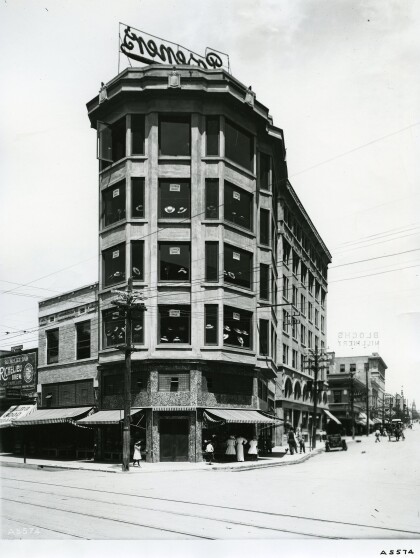
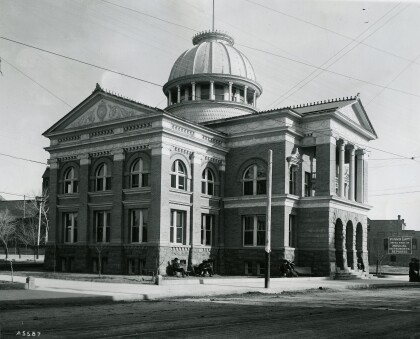
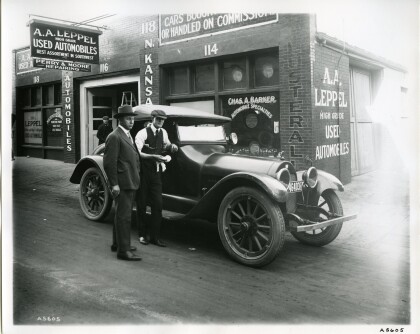
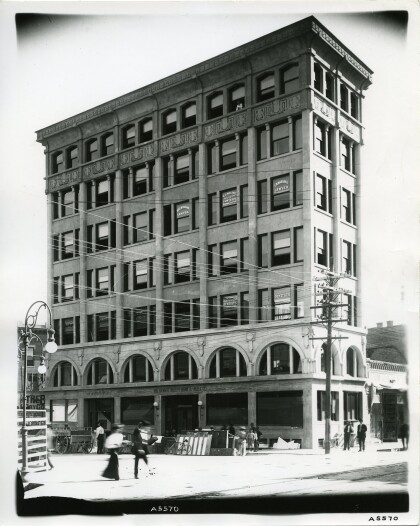
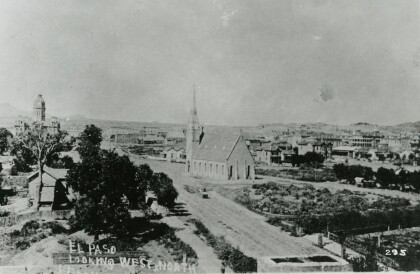
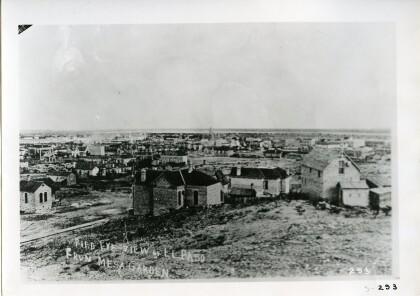
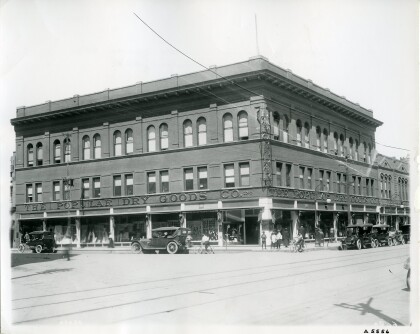
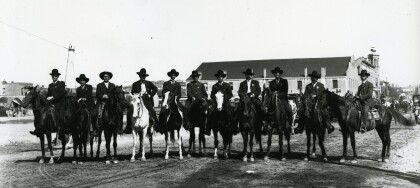
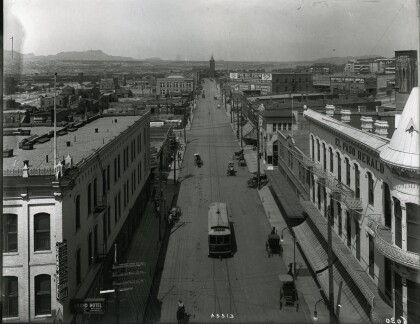
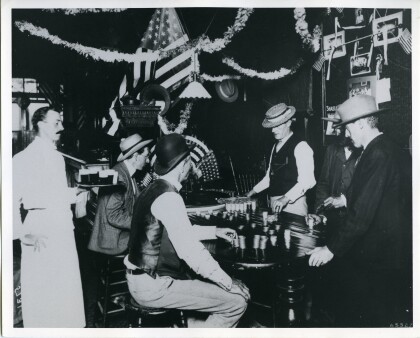
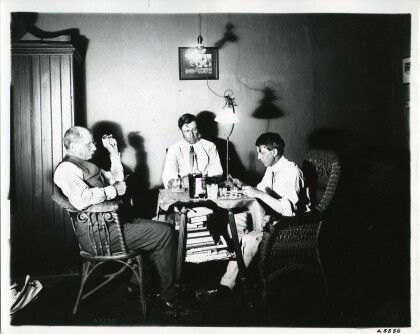
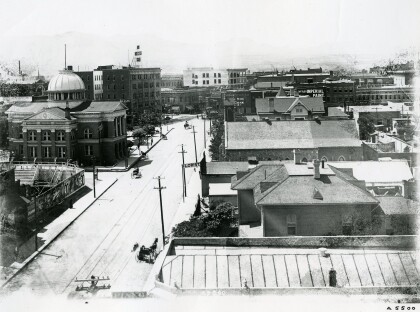
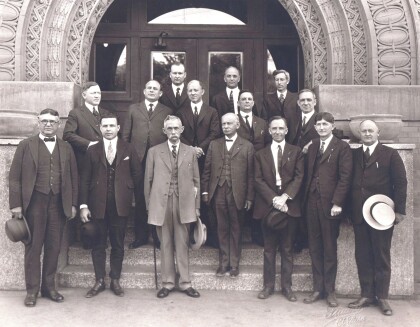
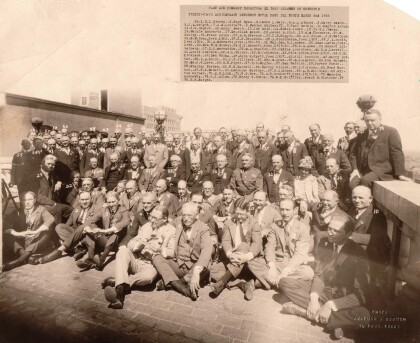



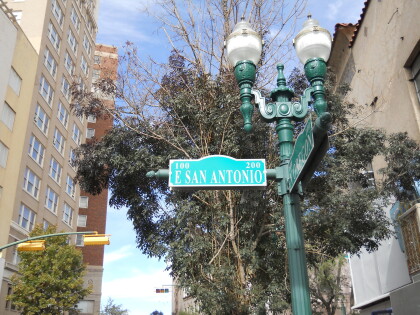
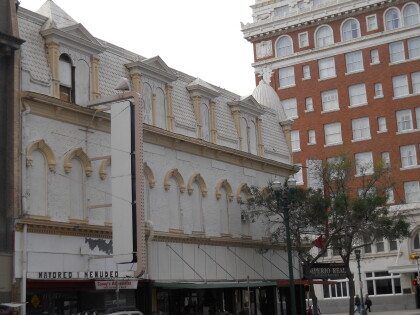
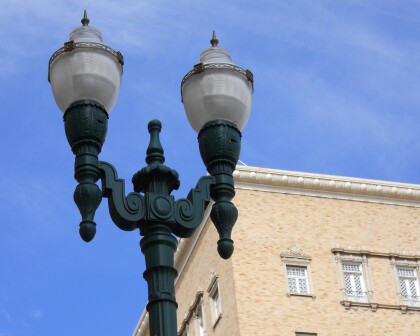
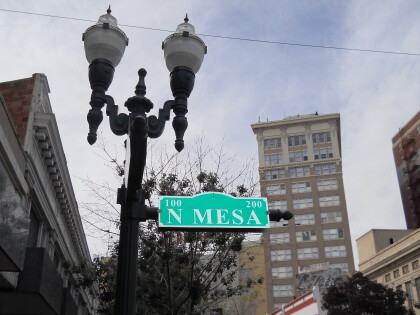

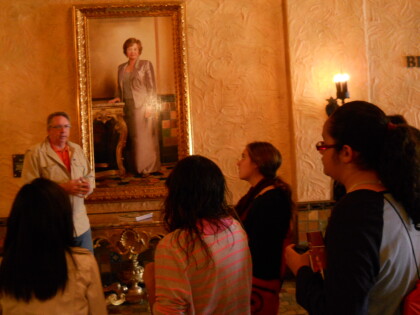
Comentarios
Hacer un comentario